Leverage for More Online Leads with Product Reviews

Image source: Pixabay.com
In today’s highly competitive and rapidly evolving digital marketplace, the quest for successful online marketing has become paramount for businesses seeking to thrive and expand their customer base. Central to this endeavor is the generation of online leads, that is, potential customers who show interest in a product or service. These online leads can potentially convert into loyal patrons, making them a valuable asset for any business.
However, amidst the myriad of strategies employed to capture these elusive online leads, the significance of product reviews stands out as a powerful and often underestimated tool. In other words, although the potency and effectiveness of this tool are often underestimated, product review is one of the notable lead generation tools that can strongly influence potential customers’ decisions and substantially impact whether those prospects ultimately become dedicated patrons of a business.
This article will delve into the symbiotic relationship between product review and lead generation, shedding light on how astutely leveraging reviews can pave the way for a more robust online presence and increased lead flow. Join us as we explore the impact of well-crafted product reviews on attracting and retaining online leads, ultimately propelling businesses toward sustainable growth.
Table of Contents
The Power of Product Reviews
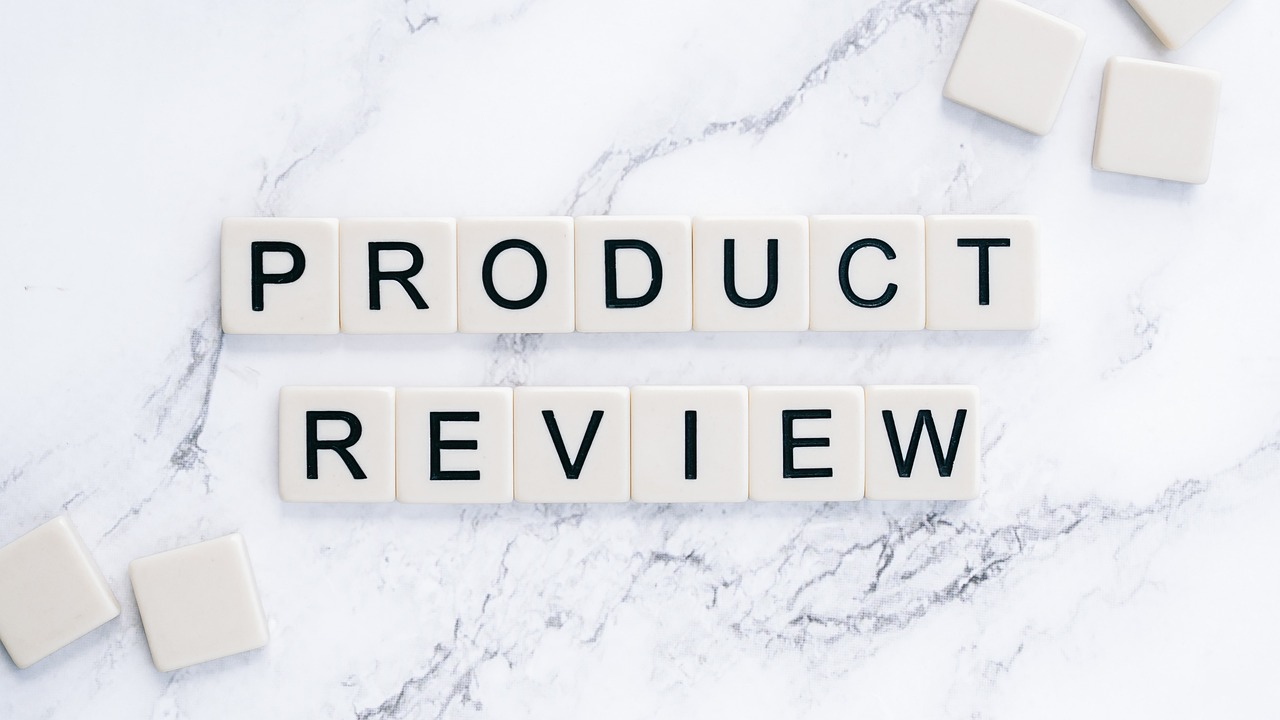
Image source: Pixabay.com
Credibility and trust are the cornerstones of successful customer relationships. However, in the digital marketplace, where face-to-face interactions are often limited, generating trust and credibility among your target audience can only be possible with a notable track record of your excellent products or services. This is precisely where product reviews come into play. It provides genuine and unbiased evidence that creates a good image in the minds of your target audience.
The idea is that humans are fundamentally social creatures, and the actions and views of others frequently influence their judgments; this is known as social proof. Online reviews, especially those expressing positive experiences, influence prospective buyers substantially. This means that when individuals see that others have found value in a product, they’re more likely to perceive it as a safe investment and purchase.
In other words, a sense of authenticity is instilled when people encounter a product accompanied by genuine reviews from previous buyers. These reviews act as peer endorsements, offering an unbiased perspective on the product’s quality and performance.
Encouraging Customers to Leave Reviews
Businesses can strategically harness the potential of product reviews to attract a steady stream of online leads and maximize their impact on lead generation and conversion. However, to prompt and encourage customers to review your products or services, creating an environment that values, empowers, and encourages customers to share their opinions is necessary. This will contribute to a steady influx of reviews that can attract and engage potential online leads. Here are some essential strategies to employ to encourage customers to leave reviews:
- Providing Exceptional Customer Experiences as a Foundation
The journey towards garnering valuable product reviews begins with providing exceptional customer experiences. Happy and satisfied customers who are pleased with your products or services are more likely to share their positive encounters. By consistently delivering on your promises, addressing concerns promptly, and exceeding expectations, you can create a pool of happy customers eager to endorse your offerings.
- Timing: When to Request Reviews Without Being Intrusive
Timing plays a pivotal role in soliciting reviews without coming across as intrusive. It is important to strike the right balance when soliciting reviews. A good strategy is to request reviews shortly after the consumer has the product and the opportunity to use it. This ensures that the experience is still fresh in their minds, increasing the likelihood of honest and detailed feedback.
- Utilizing Follow-Up Emails to Prompt Reviews
Follow-up emails provide an effective channel for requesting reviews. These emails can express gratitude for the purchase, inquire about the customer’s experience, and gently encourage them to share their thoughts through a review.
- Providing a Product Reviews Template
A product reviews template is a structured outline or format that helps individuals provide consistent and organized feedback about a product. A well-designed product reviews template typically includes sections for product details, pros and cons, performance, features, usability, and a final recommendation.
Reviewers, bloggers, or customers can use the product reviews template to comprehensively share their thoughts on products. Therefore, providing customers with a product reviews template or including direct links to review platforms streamlines the process, making it convenient for your customers to leave feedback.
- Incentives and Rewards for Leaving Reviews
Incentives can serve as a catalyst for encouraging customers to write reviews. You can offer incentives, like discounts on future purchases or special access to materials, to encourage customers to leave a review. However, it is crucial to strike a balance, such that the reviews genuinely reflect customers’ experience rather than purely motivated by the incentives.
Showcasing and Leveraging Reviews Effectively for Quality Lead Generation
It is one thing to elicit positive and genuine reviews from your customers successfully, but it is another to successfully and strategically showcase them to be visible to your target audience and attract sales-qualified leads.
Let’s talk about how you can effectively leverage customer reviews and user-generated content to expand your reach, establish a sense of community around your products, and reinforce the impact of these reviews on lead generation. Here are some essential techniques to employ to effectively leverage product reviews for more online leads:
- Integrating Reviews on Product Pages
One of the most impactful ways to leverage customer reviews for lead generation is by integrating them directly onto your product pages. When potential buyers browse a specific product, accessing authentic reviews from previous buyers can provide valuable insights. Therefore, placing these reviews prominently ensures that visitors can make an informed purchase decision right at the point of purchase consideration.
- Utilizing Star Ratings and Visual Elements

Image source: Pixabay.com
Star ratings are succinct indicators of a product’s quality and customer satisfaction. Incorporating these ratings alongside product images can offer a quick overview of how well-received the product is and ultimately help generate leads. Also, visual elements, such as star icons or badge seals indicating top-rated products, can catch the eye, enhance the perceived credibility of the reviews, and eventually help in marketing qualified leads toward purchase.
- Featuring User-Generated Content: Photos and Videos
User-generated content, like photos and videos submitted by customers, adds an extra layer of authenticity to online reviews. This visual evidence of real customers using and benefiting from your products reinforces the trustworthiness of the reviews. Featuring these visuals alongside written reviews can create a comprehensive and engaging showcase of customer experiences, influencing online leads’ interest and eventual purchase decisions.
- Creating a Dedicated Testimonial Section on Your Website
Consider creating a dedicated testimonial section on your website to consolidate the impact of reviews. This section can serve as a repository of customer feedback organized by product category or type. A well-structured testimonial section not only boosts credibility but also allows potential online leads to explore a range of positive experiences, fostering confidence in your offerings and ultimately contributing to the success of your online lead-generation campaigns.
- Sharing Customer Success Stories
Customer success stories are potent narratives that showcase how your products have positively impacted real individuals. These stories are about problems that customers were facing, how your product solved them, and the ensuing positive outcomes. You can demonstrate the practical benefits of your products by sharing these stories.
Also, by encouraging your satisfied customers to share their experiences on their social media, you expose your product or service to more people, and these individuals are more likely to trust it because their friends and connections are talking about it. This will make it easy for online leads to express their interest and, eventually, buy.
- Incorporating Reviews into Marketing Materials
Customer reviews can seamlessly integrate into various marketing materials, from email campaigns to print brochures. Including snippets of positive reviews in these materials adds an element of authenticity and social proof. Prospective online leads who encounter these reviews in different contexts are more likely to view your products with increased trust and curiosity.
- Responding to Reviews: Positive and Negative
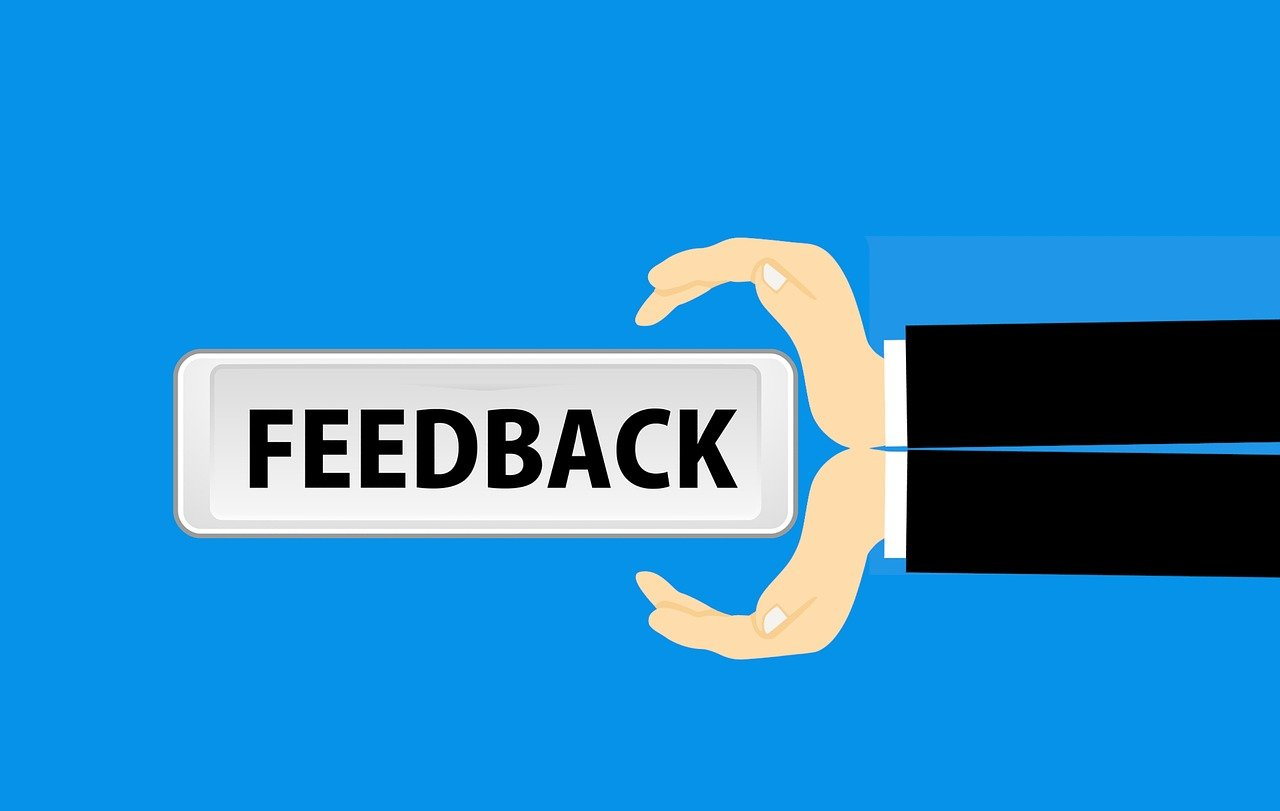
Image source: Pixabay.com
Engagement is crucial to fostering a solid review community. Responding to positive or negative reviews demonstrates that you value your customers’ feedback. For example, when you receive positive reviews, express gratitude and appreciation for their support.
When addressing negative reviews, on the other hand, approach them as opportunities to learn and improve. Thoughtful responses demonstrate your commitment to customer satisfaction and ultimately positively impact lead generation.
- Creating a Dialogue with Customers Through Reviews
Reviews can facilitate two-way communication where you encourage customers to share in-depth feedback and suggestions. Acknowledge their insights and ask follow-up questions to delve deeper into their experiences.
This strengthens your customer relationships and provides valuable insights for product enhancement. Also, it creates a sense of responsibility, interest, willingness, and genuineness, which makes your brand more attractive to online leads.
- Addressing Customer Concerns and Feedback
Negative reviews aren’t setbacks; they’re chances to show prospective and existing customers your dedication to their happiness. Promptly addressing concerns and resolving issues demonstrates your commitment to customer welfare. By actively listening and taking corrective actions, you can transform dissatisfied customers into loyal advocates who appreciate your responsiveness and attract more sales-qualified leads.
SEO Benefits of Product Reviews
Customer reviews have a significant impact on search engine rankings. This is because search engines value user-generated content as it provides unique and diverse perspectives. Search algorithms often deem products accompanied by authentic reviews more relevant and credible, potentially leading to higher search engine visibility.
Also, when writing product reviews, they often contain natural language that mirrors how your target audience searches for products online. These phrases, known as long-tail keywords, can be valuable for Search Engine Optimization. Integrating these keywords into your website’s content, including product descriptions and metadata, can improve your chances of ranking higher for specific search queries and ultimately attracts more online leads.
Overall, a product review can be an excellent inbound lead generation technique. Its impact extends beyond customer engagement, as it is also one of the most significant marketing channels for inbound lead generation. Therefore, by strategically incorporating reviews into your SEO strategy, you can bolster your online presence, attracting more online leads and staying ahead in the competitive digital marketplace.
Conclusion
Throughout this article, we’ve explored the role and impact of product reviews on online lead generation. We began by emphasizing the value of online leads for businesses in the digital age, which laid the groundwork for our discussion of how reviews may be used to attract and engage online leads.
As we have discussed, before you can leverage customer reviews for generating online leads, it takes effort to successfully prompt and encourage customers to review your products or services. This is why it is important to create an environment where customers feel valued and empowered to share their opinions and streamline their review-sharing process by providing, among other things, a product reviews template, incentives, and an excellent product to begin with.
However, using a product reviews template, incentives, or any other strategy to get customers to give reviews is not enough to drive that influx of online leads you desire. You must also strategically showcase and leverage these customer reviews to generate high-quality online leads.
From establishing credibility and leveraging social proof to showcasing reviews effectively and incorporating them into your SEO strategy, each technique contributes to a comprehensive strategy for maximizing the impact of reviews on lead generation. Product reviews are more than just testimonials; they are dynamic tools that hold the power to influence consumer behavior, drive organic traffic, and build trust.
The insights customers share through reviews offer a window into their experiences and preferences, enabling businesses to tailor their strategies and offerings to better meet their needs. This symbiotic relationship between product review and lead generation is a force that can propel businesses forward in the competitive digital landscape.
As we conclude, we encourage you, the reader, to take the insights from this article and put them into action. Craft a well-rounded review strategy encompassing encouraging reviews, showcasing them effectively, and actively engaging with your review community. Remember that leveraging product reviews for more online leads is an ongoing process that requires dedication, authenticity, and a commitment to continuously improving based on customer feedback.
Effective Open House Tactics for Quick Lead Capture

Image source: Pixabay.com
Open houses have remained a venerable tradition in real estate. As a pivotal tool for building connections, these events hold significant importance in real estate as they offer a unique opportunity for direct engagement between sellers and potential buyers. They also play a crucial role in lead generation, which is paramount in this fiercely competitive real estate market.
However, while open houses may be a valuable tool in real estate, it would not be an effective tactic if it is not harnessed properly to capture and connect with quality leads. Hence, in the midst of this highly competitive real estate market, the skill to efficiently capture leads during open house events can provide a substantial advantage.
In view of this, this article will delve into the effective strategies for quick lead capture at open houses. By implementing these effective tactics, you’ll host successful open house events, capture high-quality leads, and ultimately convert them to buyers. Let’s explore these effective tactics and strategies in detail.
Table of Contents
Effective Open House Tactics For Lead Capture
Open house events offer a unique setting where real estate professionals can interact directly with potential buyers. This face-to-face interaction offers the opportunity to establish rapport, address queries, and mitigate concerns in real time. It facilitates a connection with potential buyers, the collection of vital contact information, and the cultivation of relationships that have the potential to culminate in successful transactions, especially in a fiercely competitive market.
In summary, open houses unquestionably hold a valuable place in the real estate toolkit. However, it can be an ineffective tool if it is not wielded adeptly to capture and engage high-quality leads. The ability to capture leads efficiently can set you apart from other agents. It allows you to secure potential buyers before your competitors do. Here are effective tactics for open house lead capture:
Preparation
Preparation is a foundational element that shouldn’t be overlooked in your open house idea. It is essential for making a positive impression, showcasing the property effectively, and attracting potential buyers (leads). It also influences your chances of a successful sale.
Careful preparation ensures the property is in its best possible condition. This enhances its visual appeal and increases the likelihood of attracting interested buyers who can envision living there. It demonstrates professionalism and attention to detail, which can instill confidence in open-house visitors. Here are key points to consider as part of your preparation:
Selecting the Right Property
Before an effective and successful lead capture process, you must first ensure that you have the right property to showcase. The property you choose is crucial in attracting potential buyers and generating leads. Consider the following criteria when selecting a property:
- Location: Opt for properties in desirable neighborhoods with good amenities and schools, which tend to attract more potential buyers.
- Market Trends: Analyze current market trends to identify properties in demand. Understanding your target audience’s preferences is vital.
- Curb Appeal: Properties with eye-catching curb appeal, well-maintained exteriors, and appealing landscaping are more likely to draw in attendees.
Scheduling the Event
Timing is everything when it comes to open houses. Selecting a suitable date and time can significantly impact the number of leads you capture. Here’s how to schedule your open house effectively:
- Weekend Advantage: Most open house events are held on weekends when potential buyers have more free time. Saturday or Sunday afternoons are often the ideal choices.
- Avoid Holidays: Ensure your chosen date doesn’t coincide with major holidays or local events that might divert attention from your open house.
Property Preparation
Once you’ve identified the perfect property and scheduled the event, it’s time to prepare the home for showcasing. This step can’t be overstated in its importance. Here’s how to get the property ready:
- Staging and Presentation: Professional staging can make a property desirable to potential buyers. Consider hiring a stager to arrange furniture and decor in an inviting way that highlights the property’s best features.
- Cleaning and Decluttering: A tidy and clutter-free home is crucial for making an excellent first impression. Clean every nook and corner, remove personal belongings, and ensure the place is clean.
Marketing and Promotion

Image source: Pixabay.com
Marketing and promotion are important and effective tactics. They are essential components that not only attract visitors but also create excitement, provide essential information, and contribute to a positive perception of the property.
Promotion creates awareness about the event, attracting a larger pool of potential buyers, and strategic marketing builds anticipation and excitement around the event. It sets your open house apart, highlighting unique selling points and making the property more attractive to buyers.
Also, promotion and marketing strategies can be tailored to reach different demographics and buyer profiles, ensuring that the open house appeals to a wide range of potential buyers. Here are some crucial elements to think about as part of your marketing and promotion strategy:
Creating Enticing Marketing Materials
Effective marketing materials are your secret weapon for drawing potential buyers. Here are some effective tactics:
- High-Quality Photos and Virtual Tours: In this digital age, visuals matter immensely. High-resolution photos and immersive virtual tours give potential buyers a realistic property preview. Professional photography and virtual tours can help your listing stand out.
- Eye-Catching Flyers and Brochures: Design visually appealing flyers and brochures highlighting the property’s key features. Include high-quality images, property details, and contact information to pique attendees’ interest.
Online Promotion
The internet is a very effective tool for reaching a broad audience. It is, in fact, indispensable in this digital age. Here’s how to leverage it effectively:
- Leveraging Real Estate Websites: List your open house on popular real estate websites and platforms such as Zillow, Realtor.com, and Redfin. These platforms have a vast user base actively seeking properties.
- Social Media: Create awareness with social media by sharing information about the event on various platforms like Facebook, Twitter, Instagram, etc. Share high-quality photos, virtual tours, and engaging content to attract potential buyers. Consider using targeted advertising to reach specific demographics.
Neighborhood Outreach
Don’t underestimate the power of local connections and word-of-mouth marketing. Engaging with the neighborhood can yield excellent results. Consider:
- Inviting Neighbors to Create Buzz: Invite neighbors with a personal touch, such as handwritten invitations. Engaging with the local community can create excitement and encourage them to spread the word to friends and family who may be interested.
- Utilizing Community Bulletin Boards: Many neighborhoods have community bulletin boards, both physical and online. Post information on these boards to reach a local audience.
Lead Capture
Lead capture is a crucial aspect of the open house process. It helps you identify individuals who have shown genuine interest in the property. These are potential buyers who are more likely to be serious about purchasing.
Furthermore, effective lead capture lays the essential groundwork for fostering relationships with these prospective buyers. The contact information acquired during the event is a valuable bridge to reach out to visitors after the event concludes.
This post-event interaction offers a golden opportunity to nurture their interest, furnish them with additional property details, and address any inquiries or reservations they may harbor. By engaging with them after the event, you can cultivate a connection that may culminate in successful real estate transactions. Here are some effective tactics for lead capture:
Welcoming and Engaging Visitors
Creating a welcoming atmosphere is critical for attracting leads. Here’s how to make potential buyers feel comfortable and engaged:
- Friendly and Approachable Demeanor: Greet attendees with a genuine smile and a welcoming attitude. Approachability goes a long way in making visitors feel at ease.
- Greeting Techniques: Use open-ended questions to initiate conversations. For example, ask visitors what they want in a home or what attracts them to this property. This encourages dialogue and provides valuable insights.
- Engagement: Engage with visitors to build rapport. Ask questions, listen to their needs, and offer relevant information. This can encourage them to share their contact details willingly.
Sign-In Process
Collecting visitor information is crucial for lead capture. Here’s how to manage the sign-in process effectively:
- Utilize Guest Lists: Maintain a guest list to keep track of attendees. This list is a valuable resource for follow-up and ensures that no potential leads slip through the cracks.
- Sign-In Sheet: Have a sign-in sheet at the entrance where visitors can provide their name, email address, phone number, and any specific preferences or questions. Make it easy for them to leave their information.
- Digital Sign-In/ Lead Capture Form: Consider using digital sign-in methods like a tablet, smartphone apps, or an online lead capture form. These streamline the process and make it easier to collect visitor data.
Utilizing Technology

Image source: Pixabay.com
Embrace technology to enhance lead capture efforts. Here are some effective tactics:
- Tablet or Smartphone Apps for Lead Capture: Use dedicated apps to input visitor information directly into your database. This simplifies lead generation, reduces the chances of manual errors, and speeds up data entry.
- QR Codes and Email Sign-Up Forms: Place QR codes strategically throughout the property, linking to email sign-up forms or lead capture forms. This allows interested attendees to provide their contact details digitally.
- CRM System: Utilize a CRM system to efficiently organize and manage your leads. This helps you keep track of interactions and automate specific follow-up tasks.
- Feedback Forms: Provide feedback forms or surveys that visitors can fill out. Include a section for them to leave their contact information, making it part of the feedback process.
Offering Incentives
Entice potential leads to share their information willingly by offering incentives. Here are some effective tactics:
- Contests, Giveaways, or Exclusive Access: Consider holding a contest or giveaway with enticing real estate or home improvement prizes. Additionally, grant exclusive access to valuable resources or guides in exchange for contact information.
- Freebies: People are more likely to engage when they perceive value in return. Freebies create a sense of reciprocity, making attendees more willing to share their details.
- Privacy Assurance: Assure visitors that their contact information will be used only for follow-up related to the open house and not for unrelated marketing purposes. Respect their privacy and preferences.
Effective Follow-Up Strategies
Lead capture does not end with lead generation. After lead capture, it is essential to promptly follow up with leads, whether through personalized emails or phone calls. Prompt follow-up demonstrates your commitment and responsiveness. It keeps the potential buyers engaged and interested in the property.
The truth is, in this competitive real estate market, timely follow-up can give you an edge over other real estate agents. If potential buyers are considering multiple properties, being the first real estate agent to provide information and assistance can make a difference. Real estate decisions are often not made hastily; maintaining contact lets you stay on their radar as a trusted resource.
It’s an opportunity to address any questions or concerns they may have that arose during their visit to the open house. It is an opportunity to provide additional information, such as property details, neighborhood insights, financing options, and market trends, which can further educate and influence their decision. Here are some essential follow-up strategies to employ:
Promptly Following Up with Leads
Timing is crucial in follow-up. To maximize your chances of converting leads, adhere to the “24-hour rule”. Contact leads within 24 hours of your open house. This demonstrates your commitment and keeps your property fresh in their minds.
Personalized Communication
Generic follow-ups may not yield the best results. Reference specific aspects of the property that interested each lead during the event. Personalized messages show that you value their unique needs and preferences.
Drip Email Campaigns
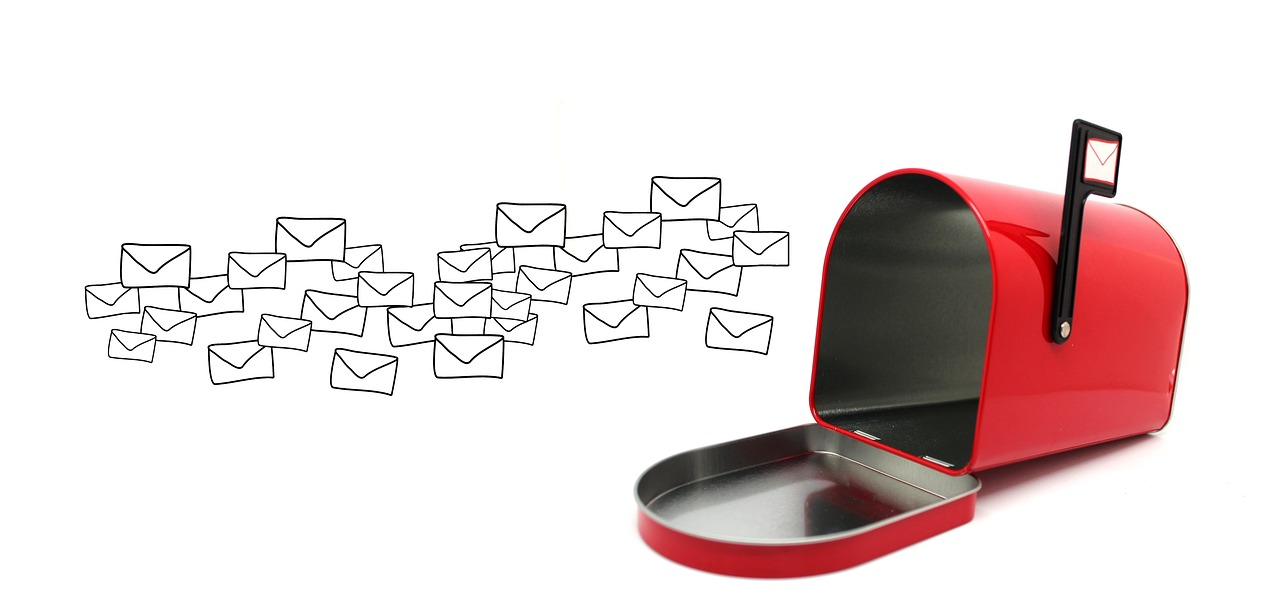
Image source: Pixabay.com
Maintain engagement with your leads over time with well-planned drip email campaigns. Create a series of informative and engaging emails that provide value to your leads. Share market updates, home-buying tips, and property listings to keep them interested in your services.
Leveraging Customer Relationship Management (CRM) Software
Organize and streamline your lead management efforts with CRM software. A CRM system allows you and your sales team to efficiently manage leads, track lead information, and qualify leads. You can set reminders for follow-ups, categorize leads, and access valuable insights to refine your strategy.
Conclusion
In this article, we have delved into the fundamentals and significance of open house events in real estate and explored essential strategies for maximizing lead capture during these events. As we have discussed, the journey to successful lead capture begins with meticulous preparation, where the choice of property, event timing, and property presentation all play pivotal roles. Effective marketing and promotion are also fundamental components of your preparation. These elements create the buzz and excitement that draw prospective buyers to your event.
While adequate preparation and effective marketing are essential, they are not sufficient for successful lead capture. To truly excel in lead capture, warm and engaging interactions are crucial. Combining these interactions with a seamless sign-in process and strategic use of technology sets the stage for gathering essential lead information. Also, offering incentives can further motivate potential buyers to share their contact details willingly.
But the journey doesn’t end with lead capture. The true essence of lead capture lies in the follow-up through prompt and personalized communication. Proper follow-up is the key to establishing a connection with and nurturing the leads you’ve captured, ultimately increasing the likelihood of conversion. By adhering to these strategies, you not only achieve efficient lead capture and generate more leads, but you will also foster relationships that have the potential to culminate in successful real estate transactions that will raise money or revenue.
Guide to Nurture Leads and Turn Them into Customers
The act of converting a visitor into a lead on your website doesn’t mean you have sales ready leads. It is just the beginning because leads are like raw materials in a factory. Leads will not make sales, so you should convert and nurture leads into sales. You should process every lead with utmost attention to transform them into a finished product (a loyal customer).
Source: Make Web Better
Traffic and leads are not the end goal in themselves. The subsequent conversion into sales is important to sustain a business. You should improve your sales and marketing teams and their activities with time for the best results in lead engagement. The complexity and profusion of modern marketing strategies can be intimidating. It is necessary to meet the complex needs of modern clients.
Lead nurturing empowers modern sales and marketing processes. In fact, it is an art to cultivate relationships with potential customers. To nurture leads, you can guide customers through the various stages of the buyer’s journey for lead engagement. And ultimately convert them into loyal, paying customers.
Today, we will share a guide to nurture leads and turn them into loyal customers. Continue reading to learn the best sales strategies for lead engagement and nurturing.
Table of Contents
Effective Lead Nurturing Tactics to Nurture Leads
You need effective lead nurturing tactics to guide potential customers through the sales funnel. You should build trust to convert leads into loyal customers. Here are some highly effective strategies to align sales and marketing teams and nurture leads:
Source: Pixabay
Lead Segmentation Based on Characteristics
To effectively nurture leads, you should segment them based on characteristics such as demographics, interests and behavior. This enables you to tailor your nurturing and lead engagement efforts to specific groups. It is an excellent way to deliver more relevant content and offers.
What is the need for personalized efforts to nurture leads?
Because every lead is different; therefore, you can’t treat them the same way. For example, a person who attends your webinar or podcast is more interested in your product or service than someone who lands on your website after clicking an online ad.
You should segment your leads and prioritize them according to their likelihood of buying your products. Similarly, segment your leads based on demographic information. For example, age, gender, location, industry and job titles may help you tailor your message to their needs, pain points and interests.
Nurture Leads with Targeted Content Marketing
As we mentioned, all leads are different, so you can’t use a one size fit content strategy. You need targeted content to nurture your leads strategically. It can definitely improve results and nurture leads. Start this process by understating your buyer personas. And create targeted content to nurture leads based on their marketing triggers, objectives, goals and interests.
You can use marketing automation software to identify, target and segment your buyer personas. It will prove beneficial in scaling your strategy to nurture leads. Provide educational and valuable content that addresses the questions and pain points of your leads. This may include how-to guides, webinars, blog posts, etc. These efforts facilitate lead engagement.
Use Email Marketing Lead Nurturing Campaigns
Source: Pixabay
Email marketing is an effective lead nurturing campaign. Many lead nurturing strategies involved an email drip campaign to convert non-nurtured leads. It consists of sending out generic emails to target customers. You can ask your marketing professionals to use new technologies for email nurturing.
Use a combination of email marketing, automation, paid retargeting, sales outreach, social media and dynamic website content. Properly execute several tactics to ensure your sales and marketing team is well aligned. Plus, they should work cohesively.
With email marketing, you can send personalized offers in direct mail to leads based on their actions and preferences. Personalization can improve conversion rates and lead engagement.
Lead Scoring to Prioritize and Nurture Leads
Implement a lead scoring system to prioritize leads based on their level of engagement and readiness to buy. Focus your efforts on high-scoring leads who are more likely to convert. Remember, lead scoring is a strategy to assign a score to your prospects.
The higher number of points indicates the high quality leads. With this method, it becomes easy to understand the position of your prospects in the sales cycle. See how lead scoring works:
- It helps you understand the customer’s needs and create educational content accordingly.
- Create the conversion tunnel and track the progress through lead scoring.
- It enables you to track the progress of the lead nurturing strategy. Plus, you can identify leads who are interested in your content.
Use Communication Channels to Nurture Leads
Source: Pixabay
For the success of your lead nurturing program, you should maintain dialogues with them. To convert leads into sales, you should send them regular updates. It doesn’t mean to send them dozens of messages daily. You need lead nurture programs to determine the right time to communicate. In fact, your prospects should understand that you are available for their business.
You can offer help and advice to visitors through an interactive chat bubble, email, social networks, etc. To help prospects move forward, it is beneficial to multiply touchpoints. Moreover, diversify the type and medium of your content.
A famous lead nurturing strategy requires you to send a questionnaire to a potential customer. The goal is to gather customer data and better understand their problem, constraints and expectations. Moreover, offer them relevant content, such as product demonstrations, white papers, etc.
Social Media Marketing for Building Relationships
Social media is an effective way to get warm leads and build meaningful relationships. You will have an easy way to talk to your prospects. Moreover, social media can increase the engagement of targeted people with your content.
Internet users between 16 years and 64 years are available online. They spend over 2.5 hours on social media daily. Now you can understand the significance of social media marketing. You will find your targeted audience on social media.
So you can effectively show your brand’s personality. To get everything right, create engaging social media posts:
- Update content regularly
- Post valuable content to the right social media platforms
- Communicate with your target audience
- Understand your target audience
- Carefully study analytics
- Be mindful of trends
- Use special tools for automation
- Offer dedicated customer service through social media
Remember, social media enables you to retarget ads. Potential customers can forget about your products or services after leaving your website. But social media retargeting can remind them about your business and nurture leads.
Give a Reason to Your Leads to Reach Out to You
To nurture leads effectively, you should create relationships with your audience. Remember, lead generation needs successful lead nurturing. Your sales team should focus on cross-channel communication to facilitate the entire sales process.
Since your nurtured leads may be confused about making a decision. You can guide them to make the right decision in your favor.
Every qualified lead is different, so use different communication channels, such as emails, chats, demos and webinars. No doubt, social platforms should give a professional look to your brand. It can impact your online reputation and lead nurturing strategies.
You should not misinterpret the professional image. It doesn’t mean to publish serious content only. You can publish fun events and memes to entertain people. In fact, your social channels should reflect that you are open to communication. And you are easily available to anyone.
For converting leads, share your up-to-date content information. An out-of-service phone number can increase the frustration of your existing leads.
Key Performance Indicators to Nurture Leads
What do you want to achieve from your lead nurturing process? Do you have an idea about your final destination?
You will only reach your destination if you are clear about where you want to go. Think about your objectives.
For example, how many leads do you need for your business?
Moreover, do you have a plan for lead engagement?
You can create scorecards to measure the effectiveness of your lead nurturing efforts. These will help you track the progress of leads through the nurturing process. Moreover, assign scores to leads based on actions and behaviors.
To measure the effectiveness of your lead generation strategy, you can measure the conversion rate and lead-to-customer ratio. It will help you gain valuable insights, improve your strategy and nurture more leads.
Understand What Can Bring Your Qualified Leads to Purchase
An effective lead nurturing strategy should be based on research and data of your customers. So do your research to collect data and nurture leads.
It will help you reduce the cost of each nurtured lead. Plus, you have a plan to convert them into loyal customers. To nurture leads, you should offer them value and solve their problems. And your messages should convey what you can do for them.
Before investing your time in lead management efforts, you should be clear about the following points:
- Highlight your ideal customer profile
- Main pain points of your customers
- Messages and content that resonate with your qualified leads
- Requirements of the awareness stage
By finding the lead magnets for your customers, you can motivate them to be a part of the buying process.
Use CRM as a Lead Nurturing Tool for Lead Management
A CRM (customer relationship management) is suitable for different purposes. You can manage your customers, freelancers, suppliers, etc. Fortunately, CRM is good to nurture leads. No doubt, CRM will be an effective lead management tool. This tool will help you in the following ways:
Good for segmentation because you can add custom fields, tags, labels, etc. To personalize communication, you can segment your leads into warm, hot, and cold leads.
Automate different aspects of your lead nurturing strategy. You can automate emails according to tags.
CRM is a powerful database that helps you organize a huge amount of information. It enables you to use many sales pipelines to visualize and manage leads.
If you are using CRM, you can’t forget to nurture new leads. It helps you take action for newly generated leads. You can assign tasks and reminders to CRMs for lead engagement.
Conclusion
In short, you need a successful lead nurturing strategy to nurture leads. It is the best way to increase your opportunities for lead engagement and closing new customers. If you have the right plan, it may not be challenging to nurture leads. In fact, you should understand your ideal customers and their pain points.
You can implement lead nurturing strategies for the best results, such as paid ads and email automation. These strategies will help your lead management efforts. By nurturing leads, you can stay on the top of the mind of your customers.
With successful lead nurturing, you can reduce overall customer acquisition costs. It can improve conversion rates from lead nurturing and marketing campaigns and boost revenue.
Turn Lost Leads to Buyers Avoid Cart Abandon
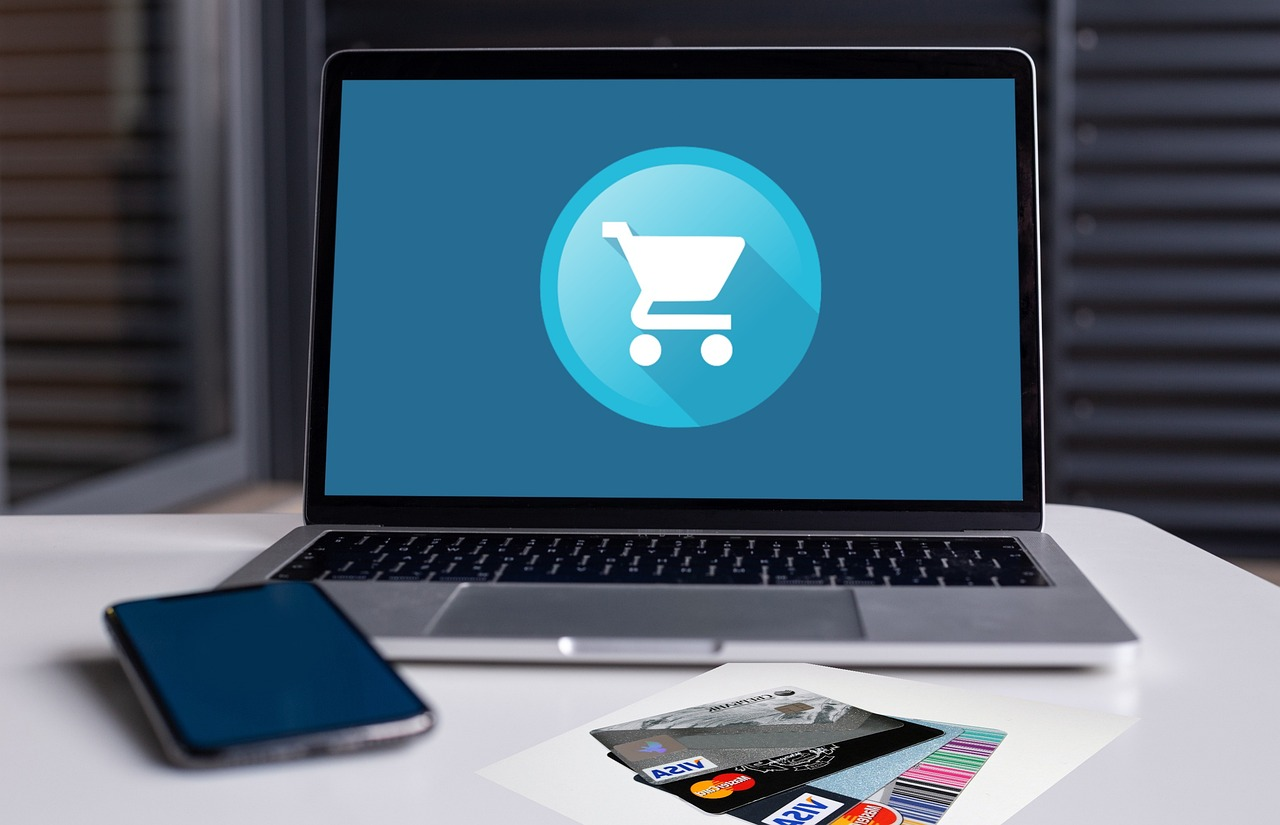
Image source: Pixabay.com
In today’s dynamic and fast-paced world of e-commerce, the journey from a potential lead to a satisfied customer is riddled with challenges, one of which is the issue of cart abandonment. When a customer places an item in their online shopping cart and leaves without purchasing, an opportunity is lost, a lost lead that could have transformed into a loyal buyer.
This frustration of witnessing potential buyers abandon their shopping carts midway through the purchasing process is all too familiar to online retailers and is a significant threat to a business’s sales process, profit, and overall growth.
However, amidst these lost leads lies a remarkable opportunity to salvage potential sales and enhance revenue streams. When you understand how to address this significant issue of cart abandonment and the right strategies for converting leads and enhancing customer engagement, you can tap into a wellspring of untapped potential and unlock opportunities to maximize your online business’s success through increased e-commerce revenue.
With that in mind, this article aims to provide actionable insights and practical techniques to empower you to re-engage lost leads, guide them through the purchasing journey, and avoid cart abandonment. By delving into the intricacies of this prevalent issue, we will unravel the mystery behind abandoned carts and lost leads, shedding light on effective strategies to transform these missed opportunities (lost leads) into successful conversions.
Table of Contents
Understanding Cart Abandonment

Image source: Pixabay.com
Cart abandonment occurs when a prospective customer adds things to their online shopping cart but does not go through with the purchase. This phenomenon holds immense significance in online shopping, directly impacting revenue and profitability. It’s akin to having a customer eagerly browse through a brick-and-mortar store and select items of interest, only to walk out without making a purchase.
Research indicates that cart abandonment rates can reach as high as 70% across various industries. That is, seven of every ten potential customers interested in products might leave without converting into buyers. Such figures underscore the urgency of addressing this issue for businesses seeking to optimize their sales and marketing strategy to enhance customer satisfaction.
Actionable Strategies to Avoid Cart Abandonment
Why do potential customers leave their carts behind? The reasons are as diverse as they are telling. It can be because of unexpected costs, such as shipping fees or taxes that only become apparent during checkout, or a complicated process that demands excessive information or involves multiple steps.
In essence, numerous factors contribute to cart abandonment, each bearing its weight in discouraging qualified leads from completing their purchases. However, the underlying fact of the issue is that the reasons behind cart abandonment often revolve around the need for a frictionless, transparent, and user-centric shopping journey.
Therefore, by acknowledging and addressing these common stumbling blocks to seamless and frictionless customer experience, businesses can begin to decode the cart abandonment puzzle and develop strategies to reclaim those lost leads. Here are important actionable strategies that you can employ to curtail cart abandonment, avoid lost leads, foster trust, enhance your e-commerce lead generation and lead conversion process, and guide your leads through the checkout page.
- Transparent Pricing and Shipping Costs
One of the foremost concerns that lead to cart abandonment is the surprise appearance of unexpected costs at the checkout stage. To counteract this, you must prioritize transparency in pricing. Display all costs, including shipping fees and taxes, upfront. You can also offer free or discounted shipping for larger orders to incentivize customers to complete their purchases.
- Simplified and Intuitive Checkout Process
A convoluted checkout process can be a major turnoff for potential buyers, which causes you to lose leads. Streamline the process by minimizing the steps required to finalize a purchase. Implement guest checkout options to cater to customers who prefer not to create an account. Furthermore, as part of your lead conversion strategy, consider offering multiple payment options to accommodate diverse preferences.
- Clear Return and Refund Policies
Concerns about return and refund policies can contribute to hesitation during checkout. Make sure your policies are clearly stated and easy to understand. Highlight hassle-free return processes and emphasize your commitment to customer satisfaction. This transparency can alleviate concerns and encourage customers to proceed with their purchases.
- Optimizing the Shopping Experience
Beyond addressing specific concerns, optimizing the overall sales process is paramount. Seamless navigation, intuitive design, and responsive customer support can significantly reduce hesitations and improve a positive buying experience.
By focusing on user experience, you and your sales and marketing teams can build trust and loyalty with leads, resulting in a higher lead conversion rate and repeat business. A good customer experience will also birth word-of-mouth marketing, practically converting leads into sales reps who will tell others how good your products and services are.
- Mobile Optimization for a Responsive Experience
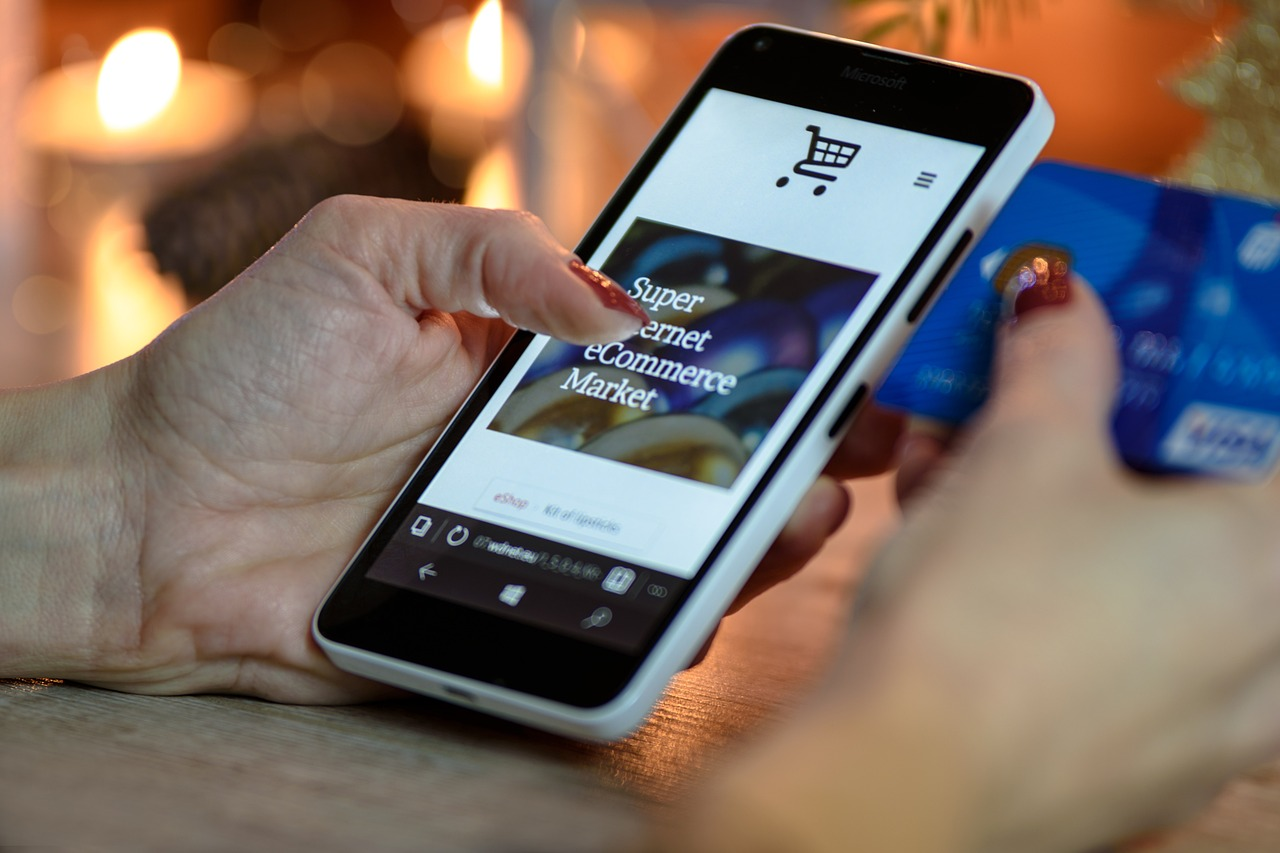
Image source: Pixabay.com
In an era where the use of mobile devices is quite popular, optimizing the checkout process for mobile users is paramount. It is indeed a brilliant lead generation and lead conversion strategy. A responsive design ensures potential buyers can navigate, select products, and finalize purchases effortlessly on their smartphones and tablets. This optimization enhances user satisfaction and captures sales from the growing mobile audience.
- Implementing Secure Payment Methods
Security is a paramount concern for online shoppers. Highlight the security measures in place to protect their payment information and display recognized and trustworthy payment icons to assure customers that their sensitive data is safeguarded. This reassurance can alleviate anxieties and encourage them to proceed with their transactions.
- Showcasing Customer Reviews and Ratings
Customer reviews and ratings act as social proof, instilling confidence in potential buyers. Showcase authentic testimonials from previous customers who have had good experiences with your products and services. This transparency lends credibility to your brand and products, nudging hesitant shoppers closer to purchasing.
Re-engagement Strategies to Convert Lost Leads
Lost leads represent a treasure trove of potential customers who, for various reasons, did not complete their intended purchases despite expressing their interest and even selecting their desired products with the intention of buying. Understanding the psychology behind their decision not to proceed with buying is pivotal in transforming these lost leads into actual buyers. This is because their deliberate interest signifies an intent to purchase, making them far more promising than casual browsers.
Therefore, by devising strategies for re-engaging and converting leads, businesses can harness this untapped potential and witness a substantial uptick in their lead conversion rate. Here are important re-engagement and conversion strategies that you can employ to re-engage lost leads and convert leads into paying customers
- Personalized Email Reminders with Cart Contents
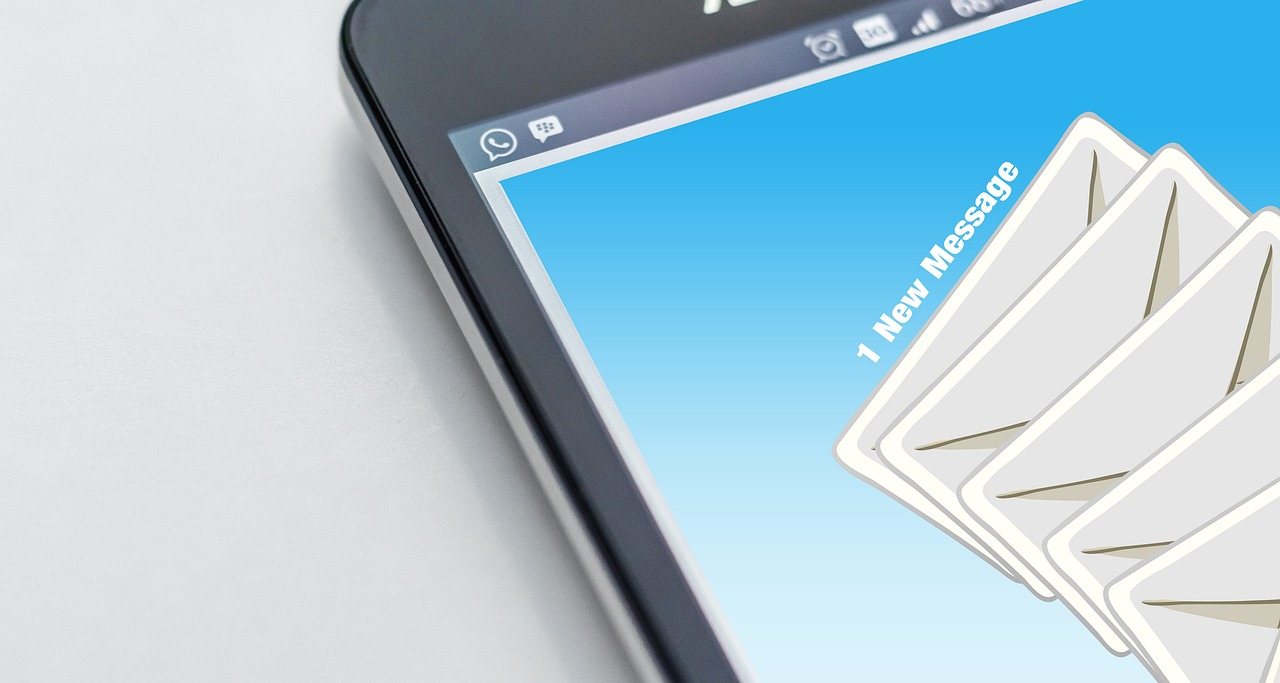
Image source: pixabay.com
Personalized email reminders can be a powerful email marketing tool in rekindling the interest of lost leads. Craft compelling messages that remind customers about the items they left behind in their carts. Include attractive visuals and a direct link back to their cart for seamless re-entry. This approach leverages familiarity and gently nudges them towards completing their purchase.
- Targeted Ads Showcasing Abandoned Products
Extend the reach of re-engagement efforts through targeted advertising. Display ads showcasing the products left in the cart across various online platforms. Maintaining consistency in the visuals and messaging reinforces the product’s appeal and increases the likelihood of conversion.
- Re-targeting Campaigns Across Platforms
Implement cross-platform re-targeting in your lead generation campaigns to meet potential buyers where they are. You can leverage social media platforms, search engines, and other digital spaces to remind users about their abandoned carts. This integrated approach increases the chances of re-engaging lost leads, regardless of their browsing habits.
- Utilize Value-Based Messaging and Incentives
Value-based messaging is a linchpin in re-engagement efforts. Craft messages that highlight the benefits and value of the products left behind. Address pain points and showcase how these items can enhance the customer’s life. Additionally, consider offering incentives such as limited-time discounts or exclusive offers to sweeten the deal and encourage swift action.
- Suggesting Related Products Based on Past Interactions
Personalized recommendations are a game-changer when re-engaging lost leads or converting leads. By analyzing a customer’s past interactions and purchase history, you can intelligently suggest related products that align with their interests. This not only enhances their shopping experience but also increases the likelihood of enticing them to revisit their abandoned cart and explore complementary offerings.
- Offering Exclusive Discounts Aligned with Customer Preferences
Exclusive discounts tailored to a customer’s preferences can be a potent motivator for a lost lead. Imagine receiving an email containing a discount code for the items you left behind. This kind of personal touch demonstrates that you value their business and are willing to incentivize their return. Such discounts can act as the final push needed for converting leads into satisfied customers.
- Leveraging Behavioral Data for Personalization
Potential buyers’ behavior holds valuable insights that can unlock the mystery behind cart abandonment. You can employ data analytics tools to analyze their interactions, from the products they view to the stages of the checkout process they abandon.
By delving into their actions and interactions on your e-commerce platform, you gain a deeper understanding of the reasons behind their decisions. This understanding is instrumental in lead scoring, helping you determine potential quality leads and crafting effective strategies to address their concerns and guide them toward completing their purchases.
That is the beauty of behavioral data: its ability to inform targeted strategies. Armed with insights into customer preferences and pain points, you can craft re-engagement messages that directly address their concerns. Whether through personalized email reminders or re-targeting ads showcasing abandoned products, tailoring these strategies increases their effectiveness. It resonates with customers on a deeper level.
Conclusion
Lost leads are not just missed opportunities but windows into untapped potential. In other words, converting leads is not just about salvaging sales; it’s about fostering connections, building trust, and optimizing the shopping experience to transform hesitant browsers into enthusiastic patrons.
In this article, we have discussed the fundamentals, causes, and solutions to cart abandonment. We have also discussed important re-engagement strategies that you can employ to recapture lost leads and ultimately improve your sales. From understanding the nuances of cart abandonment to harnessing the power of behavioral data and personalization, the strategies outlined in this article offer a comprehensive approach to converting leads into loyal customers.
The strategies discussed in this article serve as a foundation that can pave the way for a more seamless and rewarding customer journey, ultimately redefining your sales funnel and how lost leads can be converted into loyal buyers. By integrating these strategies into your e-commerce arsenal, you’re not only enhancing the conversion process and making more sales, but you’re also shaping a future where your brand thrives amidst evolving trends and customer expectations.
Mastering Lead Conversion From Interest to Action

Image Source: Unsplash
Table of Contents
The Conversion Challenge
In the bustling digital marketplace, where every click and interaction holds potential, mastering the art of lead conversion is both a challenge and a necessity. It’s not merely about attracting attention it’s about sustaining that interest and channeling it into tangible action.

Image Source: Unsplash
Imagine the journey of a potential customer. Their first brush with your brand might be a fleeting ad on social media or a recommendation from a friend. This spark of interest, if nurtured correctly, can set the stage for a deeper connection. But how do you guide this interest towards a meaningful action? This is where a robust lead conversion strategy comes into play.
Lead scoring becomes an invaluable ally in this journey. By gauging the potential of each lead, businesses can prioritize their efforts, ensuring that their sales and marketing teams focus on the most promising prospects. But generating leads is just the beginning. The real magic lies in the lead conversion process, where these potential interests are transformed into concrete actions, be it a purchase, a subscription, or a sign-up.
The synergy between sales and marketing teams is crucial here. While marketing crafts compelling narratives to attract and engage, the sales team bridges the gap, personalizing the experience and addressing specific needs and concerns. Together, they refine and implement lead conversion strategies that resonate, ensuring that every lead, every interaction, is a step towards conversion.
But as with all things digital, the landscape is ever-evolving. To stay ahead, businesses must continuously assess and adapt their lead conversion strategy. By leveraging insights, analyzing conversion rates, and iterating their approach, they can ensure that their journey from sparking interest to prompting action is not just effective but also innovative.
In the grand tapestry of digital engagement, lead conversion is the golden thread that weaves success stories. And for businesses aiming to thrive, mastering this art is not just beneficial it’s imperative.
Understanding the Modern Lead
In the dynamic realm of the digital age, the profile of the modern lead is ever-evolving. Gone are the days when a one-size-fits-all approach could captivate audiences. Today’s digital consumer is informed, discerning, and craves authenticity. They come with specific behaviors, expectations, and, inevitably, pain points that businesses must recognize and address.

Image Source: Unsplash
Understanding these nuances is the cornerstone of effective lead conversion strategies. It’s not just about casting a wide net in the vast ocean of lead generation it’s about ensuring that once you’ve caught the attention of these potential leads, you’re equipped to guide them through the sales process seamlessly. And how do you achieve this? Through personalization and tailored experiences.
Personalization is no longer a luxury it’s a necessity. The modern lead doesn’t want to be just another number in a database. They seek experiences that resonate with their unique needs and aspirations. This is where lead nurturing plays a pivotal role. By crafting personalized journeys, businesses can significantly improve their lead conversions. A good lead conversion rate isn’t just about numbers it’s about forging genuine connections.
The role of tailored experiences in achieving a good lead conversion rate cannot be overstated. Whether it’s a customized email campaign, a product recommendation based on browsing history, or even a personalized discount, these tailored touches can make the difference between a lead that drifts away and one that converts.
In essence, the modern lead is a blend of opportunities and challenges. While they offer the potential to become qualified leads, converting them requires a deep understanding and a strategic approach. By embracing personalization and continuously refining their lead conversion strategies, businesses can ensure that they’re not just attracting leads but are also effectively positioned to convert leads into loyal customers.
The Conversion Funnel Demystified
In the intricate dance of lead conversion, the conversion funnel stands as a choreographed sequence, guiding potential customers through a journey from mere awareness to decisive action. But to truly master the art of conversion, one must first understand the rhythm and flow of this funnel.

Image Source: Unsplash
Awareness is the initial spark, the first glance. It’s when a potential customer becomes aware of a brand or product, perhaps through a social media post, an advertisement, or word of mouth. At this stage, the aim is to capture attention, to make a memorable first impression.
Moving deeper into the funnel, we encounter Consideration. Here, the lead is not just aware but is actively seeking more information, weighing options, and considering the offerings. They might sign up for a newsletter, read reviews, or engage with content. It’s a stage of exploration and evaluation.
Finally, at the funnel’s narrowest point, is Decision. This is the moment of truth. The lead is ready to take action, be it making a purchase, signing up for a service, or any other form of commitment. It’s the culmination of the journey, where effective lead conversion strategies bear fruit.
However, the funnel isn’t always a smooth slide from top to bottom. There are potential drop-off points where leads might lose interest or get sidetracked. Identifying these points is crucial. Is the content not engaging enough during the consideration stage? Is the checkout process during the decision phase too complicated? By pinpointing these hurdles, businesses can craft strategies to mitigate them, ensuring that the lead remains engaged and continues on their journey.
In essence, the conversion funnel is more than just a model it’s a roadmap. By understanding its stages and the unique challenges each presents, businesses can craft tailored experiences that not only guide the lead but also resonate with them, ensuring a journey that’s both memorable and effective.
Strategies for Effective Engagement
In the bustling digital marketplace, where every interaction holds the potential for conversion, effective engagement isn’t just beneficial—it’s imperative. But how do businesses ensure that their messages not only reach their audience but also resonate deeply with them? The answer lies in a blend of strategic approaches and understanding the modern consumer’s psyche.

Image Source: Unsplash
Content is King: This age-old adage holds truer now than ever before. In a world inundated with information, crafting compelling content that stands out is paramount. But it’s not just about being loud it’s about being relevant. Content that resonates speaks directly to the audience’s needs, desires, and pain points. It’s tailored, timely, and above all, authentic. Whether it’s a blog post, a video, or a social media update, content that captivates can significantly improve lead conversion rates.
Multi-channel Approach: The modern consumer is everywhere—scrolling through social media, browsing websites, checking emails, and more. To effectively engage them, businesses must be present across these platforms, delivering a cohesive message. A multi-channel approach ensures that whether a potential lead encounters a brand on Instagram, a search engine, or a newsletter, the core message remains consistent, reinforcing the brand’s value proposition and guiding them through the lead conversion process.
The Power of Social Proof: In an era where consumers are more skeptical than ever, the voice of their peers holds immense sway. Reviews, testimonials, and case studies act as powerful tools in the lead conversion strategy. They provide tangible evidence of a product or service’s value, building trust and credibility. When potential customers see real-world examples of satisfied peers or read genuine testimonials, it bolsters their confidence in the brand, making them more likely to convert.
Leveraging Technology for Conversion
Harnessing the right technological tools and platforms is pivotal for lead conversion success. The most successful companies recognize that technology isn’t just an enhancer it’s a cornerstone in crafting strategies that deeply resonate, engage, and convert.
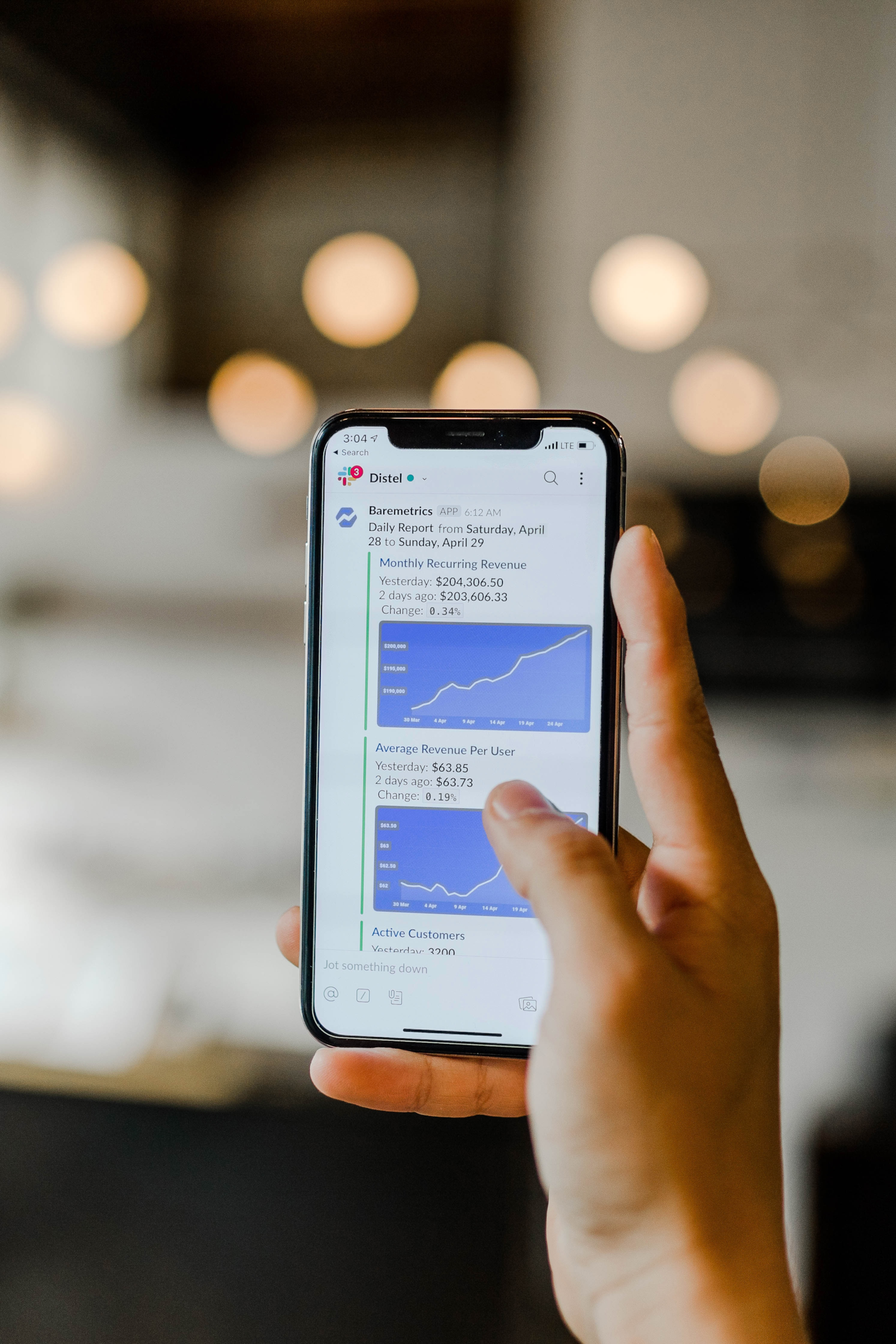
Image Source: Unsplash
Automation Tools and CRM Systems: The journey from potential lead to a paying customer is filled with critical touchpoints. Automation tools, paired with robust CRM systems, simplify and streamline this journey. They ensure timely engagement, meticulously track lead conversion metrics, and offer insights pivotal for refining strategies. For instance, a well-optimized landing page can capture more leads, while a CRM system aids sales reps in effectively prioritizing and nurturing leads, guiding potential customers seamlessly through the sales funnel.
AI and Predictive Analytics: Anticipating a lead’s needs and desires is where AI and predictive analytics shine. These technologies delve into data, analyzing patterns from search engines, landing pages, lead generation campaigns, and beyond. They offer a window into lead behaviors, enabling businesses to tailor their conversion tactics proactively. Whether it’s tweaking a landing page based on user behavior, refining a lead scoring system for better lead qualification, or predicting which marketing message might resonate most, AI equips businesses to be steps ahead.
In the realm of lead conversion, technology emerges as a game-changer. By integrating automation, CRM systems, AI, and predictive analytics, businesses can craft experiences that not only attract but also deeply resonate, transforming leads into loyal, paying customers. In the pursuit of increased lead conversions, technology stands as a beacon, guiding the way.
The Human Touch in a Digital World
While the digital landscape offers a plethora of tools and strategies to capture and nurture leads, the essence of successful conversion often boils down to one irreplaceable element: the human touch. In a world dominated by algorithms and automation software, genuine human connections stand out, creating lasting impressions and fostering trust.

Image Source: Unsplash
Building Genuine Relationships: Digital marketing, with its vast reach, can bring a significant number of leads to the doorstep of a business. However, converting these leads often requires a balance between the efficiency of automation and the authenticity of personal interaction. While automation software can streamline the lead nurturing process, it’s the personal touches—like a well-timed phone call, personalized email marketing, or genuine customer testimonials—that often seal the deal. These interactions, rooted in understanding and empathy, can significantly increase the lead conversion rate.
Training Sales Teams: A sales rep, equipped with both empathy and expertise, can be a game-changer in the sales pipeline. It’s not just about pushing a product or service it’s about understanding the unique needs and pain points of each lead, qualifying leads with precision, and offering solutions that truly resonate. Training sales teams to connect on this deeper level ensures not just a transaction, but a relationship. Moreover, with the insights from conversion rate optimization and practical strategies, sales teams can refine their approach, ensuring that every interaction maximizes conversion ROI.
In conclusion, while the tools and tactics of the digital age are indispensable, they are most effective when complemented by genuine human connection. The blend of technology and human touch is the secret sauce for businesses aiming to not just capture but also deeply resonate with their leads, ensuring a journey that transforms potential interest into loyal commitment.
Measuring and Refining Your Conversion Strategy
In the intricate dance of lead conversion, every step, every move counts. But how do businesses ensure that their steps are in the right direction? The answer lies in diligent measurement and continuous refinement. By tracking key metrics and adapting to the ever-evolving digital landscape, businesses can ensure their conversion strategy remains both effective and relevant.

Image Source: Unsplash
Key Metrics to Track: The conversion process is a journey, and like any journey, there are milestones to gauge progress. Metrics such as the lead conversion rate, the effectiveness of lead magnets, and the number of qualified leads provide invaluable insights. For instance, a sudden spike in leads from content marketing efforts might indicate a successful campaign, while a dip could signal the need for a strategy shift. Similarly, lead scoring can help businesses prioritize their efforts, ensuring that the sales team focuses on leads with a higher likelihood of progressing to the final transaction.
Continuous Improvement: The digital realm is in a state of constant flux, with changing market dynamics, evolving customer preferences, and emerging marketing practices. To stay ahead, businesses must be agile, adapting their lead conversion process based on feedback and insights. For example, if an online form is seeing a high drop-off rate, it might be too lengthy or complicated, requiring simplification. On the other hand, if a particular piece of content marketing is converting leads at an impressive rate, it might be worth replicating its success in other campaigns. The sales process, too, benefits from this ethos of continuous improvement. By analyzing the customer journey, from initial interaction to final transaction, businesses can identify bottlenecks and opportunities, refining their approach for better lead conversion.
In essence, the path to converting leads into loyal customers is not static. It requires vigilance, adaptability, and a commitment to excellence. By measuring, analyzing, and refining their conversion strategy, businesses can ensure that they’re not just capturing leads but also guiding them towards meaningful, lasting connections.
Conclusion: The Ever-evolving Art of Conversion
The realm of lead conversion is not static it’s a dynamic tapestry that continually shifts and evolves. In this intricate dance, adaptability isn’t just an asset—it’s a necessity. As the digital landscape transforms, with new social media platforms emerging and lead sources diversifying, businesses must be agile, ready to pivot and adapt.

Image Source: Unsplash
The importance of staying updated cannot be overstated. Today’s website visitors have a plethora of choices at their fingertips. To capture leads effectively, businesses must ensure their calls to action are compelling, their automated campaigns resonate, and their lead score systems are finely tuned. But beyond these tactics lies a deeper strategy: understanding how leads feel. It’s about creating genuine connections, making every interaction meaningful.
Yet, understanding is just the beginning. The true magic lies in the experimentation process. By constantly testing, refining, and iterating, businesses can discover the optimal strategies to increase lead conversion. Whether it’s tweaking a call to action, exploring new lead sources, or recalculating how to calculate lead conversion, this process of experimentation and refinement is the heartbeat of conversion success.
In conclusion, the art of conversion is a journey, not a destination. It calls for continuous learning, relentless innovation, and an unwavering commitment to excellence. For businesses aiming for sustained success in this ever-evolving landscape, the message is clear: Embrace change, cherish adaptability, and never stop refining your approach.
Leveraging Customer Personas for Targeted Lead Generation
Source: Unsplash.com
The essence of driving traffic and engagement to your website is to make sales and convert your online visitors into customers. When the audience is aware of what you offer and connects well such that they purchase a product or service on your website, you can now gradually build a targeted lead list and nurture leads for maximum conversion
You can’t connect with a customer when you don’t see through their stress or pain point. It takes empathy and proffering solutions to a targeted lead generation before you win a prospect’s trust. This is why lead targeting is essential in digital marketing or lead campaign.
You don’t give what is meant for a bird to a lion. Likewise, in marketing, for you to attract personas for conversion, you must feed their thirty interests by solving problems for them. To do that, you have to understand customer persona; which means a representation of a targeted lead generation or potential customers. In this article, you will be able to understand how important it is to leverage customer persona for targeted lead generation.
Table of Contents
Who is a Customer Persona?
This represents an ideal customer, and it is required that you know about their behaviour, values, and also your content marketing objectives. A customer persona is also called a model for your lead targeting. It is important to note what drives your target audience and why they buy your products; that way, you can channel more helpful strategies to retain your targeted lead generation.
Source: Unsplash.com
Importance of Customer Persona for Targeted Lead Generation
Customer persona is important to help the marketing team achieve a successful targeted lead generation campaign by increasing conversion. Below are the benefit of personalizing buyer persona in targeted lead generation.
Improves Lead Targeting
This helps you focus on your objective. That way, you can attract your target customers to take action. Once they provide useful information to research, you can convey the right messages that interest them. You can improve lead target in different ways, such as A/B testing, keyword research, target advertising and market survey.
It helps you Customize your Content Format
Personalizing content gives the targeted lead generation the confidence to trust your judgments. Persona information gives you an edge in making the right decisions in crafting content through the most accepted formats through social media posts, blog post, press releases, etc. To provide the right content for your targeted lead generation, you must:
- Address customer persona pain points.
- Create content relevant to a buyer’s journey, even if it means creating multiple personas.
- After addressing these vital steps, you can create compelling content that satisfies their needs.
It helps you Discover Audience Behaviour
To have an optimum targeted lead generation, customer persona helps you discover audience behaviour to assign a lead score to them and follow up appropriately for an effective conversion rate. Knowing what topic interests them and where these conversations drive more traffic then, you can take advantage of customer’s online behaviour for your business growth.
It Helps You Build Alignment Between the Sales and Marketing Teams
Sales and marketing impact the lead generation process from start to finish; every team has its role in converting a lead to loyal customers. This is why working together as a team to nurture better high quality leads generated from marketing down to conversion is essential.
Source: Unsplash.com
Steps to Leverage Customer Persona For Effective Targeted Lead Generation
Customer data profiling is necessary for reaching targeted leads because it helps you prepare your team by knowing what to expect throughout the persona’s journey. Every sales team wants a qualified lead that will effortlessly move throughout the cycle. To achieve that, you need to follow the right steps:
Identify Your Customers
To get more qualified leads, you need to define your target audience and know their expectations. Creating an idea buyer personas is the first thing to do, for example, if you want to reach first-time preggy mothers who know nothing about childbearing. You should know how to convey your message to these expectant new moms knowing that different persons experience different reactions at each stage of their pregnancy. This will go a long way to improve your lead quality by connecting with their emotions to take action, such as booking an appointment.
However, you can identify customer segments using criteria such as demographics, psychographics, behaviours, and value in your lead generation strategies. Use tools such as cluster analysis too group your customer personas based on similarities and differences for targeted lead generation.
Collection of Reliable Data
The lack of quality data for targeted lead generation will result in the failure of marketing in general. Your data should give details of your ideal target audience. Using templates to guide you through creating detailed customer persona is not bad. It is essential because it includes information such as:
- Name
- Gender
- Location
- Occupation
- Pain points
- Expectation
- Buying behaviour, etc.
To make customer data more realistic, images of each persona with these attributes beside the image will give a clear representation of how to follow up targeted lead. Also, to gather reliable data, you can track website visitors, see how they interact with your content, and monitor the trends of consistent buyers.
For B2B companies, the marketing teams use detailed contact forms to reduce the risk of sending unqualified leads sales items.
Update Customer Persona
Change is always constant, which applies to our daily life engagement. This depends on marketing and buyers preferences that can change over time. Various factors may affect targeted business leads which can result from competitors actions, market trends and budgets. There is need to update regularly and ensure it reflects to their current needs. Asking for feedbacks from customers is the first step to updating customer persona.
Buyers personas are roadmap that directs you through a customers buying journey which include likes, dislikes, habits, etc. Your sales and marketing teams should be ready at all times to proffer solutions.
There are 8 Epic ways to updating a customer persona:
- Review the existing buyer persona and adjust your sales teams methods as your company evolves.
- Ensure personas updates are in line with companies targeted sales.
- Analyze websites and social media data.
- Interview existing and potential customers
- Communicate with your sales and marketing team on the lead generation strategy to follow.
- Revise with various free tools and create templates for your customer persona.
- Input your buyer persona into your CRM contact data to generate targeted leads.
- Check to see whether your updated buyer persona sales process is effective.
Source: Unsplash.com
Building Relationship
Building relationships through the buyer’s journey is the most effective way to find targeted sales leads. Most businesses ignore this step and miss out on getting quality leads. You can utilize customers’ data to build connections intended to facilitate relationships between the sales and marketing efforts.
You can build relationships on human-to-human interaction, making you eager to connect with buyers. You can use buyer’s data to score leads and gain insight into your target prospects.
How to build relationships with targeted lead?
- Providing customers with excellent customer service, such as accessibility through websites, emails, and empathy for targeted lead generation.
- Understand your buyer’s pain point, by describing their state of mind.
- Personalize communication by offering recommendations and sending anniversary emails such as birthdays.
- Create value for customers by creating quality content, building community, and partnering with nonprofit organizations.
- Reward customers’ loyalty with incentives.
- Exceed the expectations of customers by reviewing customers feedback,
- Communicate consistently using inbound and outbound marketing strategies.
- Finally, gather customers’ feedback.
Take advantage of Social Media Platforms
Social media is a powerful tool used for the lead generation process. You can not complete a customer’s journey without using social media to interact. Here are some tips used to leverage social media targeted lead generation.
- Choose the right platform that your targeted leads use more frequently.
- Optimize your social media profiles with relevant information on your website link and contact.
- Create engagement content such as social media posts that resonates with targeted leads.
- Use social media ads/ paid advertizing to target specific audiences.
Measure and Analyze Results
To ensure the success of your targeted leads strategy, carry out analysis using Google Analytic tool to measure your lead generation results. You need to identify key metrics to help you track your conversion. The key metrics for analyzing targeted lead generation include:
- Conversion rates
- Click-through rate and
- Cost per lead.
You can determine the effectiveness of your targeted lead generation campaign by using these metrics. Google Analytics provides a free tool that provides insight into customers behaviour and website traffic. Also marketing automation platforms like Hubspot provide robust analytic capabilities to track targeted lead generation efforts.
Conclusion
The importance of customer persona can’t be overemphasized in this article, some marketers fail to prioritize this while drawing out campaign plan for the company. Creating customer persona can shape the entire marketing progress and this is essential when it comes to B2B lead generation or sales funnel techniques. You must understand the value of targeted lead generation and how to reference targeted leads when creating inbound marketing campaigns.
Unlocking the Secrets of B2B Lead Generation

Image source: Pixabay.com
Regardless of the kind of business you run, whether you are selling directly to customers (B2C) or other businesses (B2B), lead generation is a big deal for your business. Although the main idea of finding interested customers is the primary foundation of every lead generation effort, B2C and B2B lead generation strategies diverge in several ways. This is primarily due to the distinct nature of their target audiences and purchasing behaviors.
For example, B2B transactions often involve a longer decision-making process, necessitating engagement with multiple organizational stakeholders. This complexity requires tailored approaches to connect with and influence decision-makers effectively.
Also, B2B deals generally involve higher purchase volumes and are less frequent than B2C transactions. Therefore, B2B lead generation strategies must focus on building enduring relationships resulting in sustained partnerships. This article will look into the intricate details of B2B lead generation, exploring proven tips and techniques to help you unlock the secrets of successful lead acquisition and conversion.
Table of Contents
Understanding B2B Lead Generation
Specifically, B2B lead generation focuses on businesses as potential customers instead of individuals. Unlike B2C lead gen which targets individual consumers, B2B lead generation focuses on establishing meaningful business connections for mutually beneficial collaborations. It involves a strategic process aimed at identifying and nurturing potential business clients, with the ultimate goal of converting them into paying customers.
The process of B2B lead generation goes beyond simple contact acquisition it’s about nurturing relationships, understanding client pain points, and offering resonating solutions. Central to this process are several key concepts, they include:
Targeted Audience Research
Comprehensive audience research is one of the secrets to successful B2B lead generation or any lead gen efforts. Understanding your target audience’s specific needs, pain points, and priorities enables you to tailor your approach and deliver relevant solutions. It allows you to craft compelling messaging, select appropriate communication channels, and build rapport by demonstrating a thorough awareness and understanding of potential clients’ problems.
Relationship Building
Unlike transactional B2C interactions, B2B lead generation often focuses on establishing meaningful and lasting business relationships. This requires a personalized approach that caters to potential clients’ specific needs and challenges.
Value Proposition
B2B buyers are more inclined to invest in solutions that provide substantial value and address their pain. This means that effective lead gen strategies should communicate the unique value a business offers and how it can address the challenges faced by potential clients.
Trust and Credibility
In B2B transactions often involve larger quantities and more complex agreements. Trust is crucial in these kinds of transactions or relationships. Businesses must feel confident that their partners will deliver what they promise and provide reliable support. Trust is the foundation that helps B2B transactions work smoothly and build solid and lasting relationships between companies.
Key Strategies for Successful B2B Lead Generation
As we proceed, we will uncover essential strategies for B2B lead generation. Each strategy plays a crucial role in engaging potential clients, fostering relationships, and nurturing leads toward conversion. We will explore how businesses or sales teams can effectively implement these B2B lead generation approaches that resonate with their audience and pave the way for impactful interactions.
Account-Based Marketing (ABM)
Imagine you’re a company that provides advanced software solutions for healthcare institutions. Instead of sending out generic marketing materials to a broad list of contacts, your marketing and sales teams might identify a handful of major hospitals as your target accounts. With ABM, you’d research and understand each hospital’s specific pain points and objectives and then craft messaging that speaks directly to those concerns.
This is what Account Based Marketing (ABM) is about. It is a strategic marketing approach and sales process that involves concentrating your efforts on a specific set of high-value target accounts. Instead of appealing to a wide audience, ABM directs your resources towards a smaller group of businesses that are most likely to benefit from your products or services.
ABM is especially effective in B2B scenarios where the sales cycle tends to be longer and involves multiple decision-makers. The idea is to treat each of these target accounts as a market on its own. This means tailoring your marketing messages, content, and campaigns to cater to each account’s unique needs, challenges, and goals. Doing so creates a highly personalized and relevant experience for decision-makers within these companies.
Webinars and Events

Image source: Pixabay.com
Webinars provide a platform to demonstrate your industry knowledge, address complex challenges and, ultimately generate leads. Delivering value through these informative webinar sessions positions your business as a thought leader and attracts engaged B2B prospects.
In the same vein, industry events offer invaluable networking opportunities for your business or sales team. Whether attending, speaking, or exhibiting, these events allow you to connect and relate with potential clients, partners, and industry influencers.
Content Marketing
Content marketing is a foundational pillar in B2B lead generation and even in any marketing endeavor. By developing content that tackles the difficulties and pain areas of your target audience, you position your company as a trustworthy advisor. High-quality and informative content demonstrates expertise and fosters credibility, establishing a solid foundation for meaningful interactions.
Search Engine Optimization (SEO)
Since search engines are still a primary source of information globally, SEO will remain relevant in content marketing, lead creation, and marketing in general. Effective SEO usually begins with thorough keyword research. Identifying the key terms and phrases your target audience uses empowers you to optimize your content and web presence for maximum visibility in search results.
Other important aspects of SEO, such as On-page SEO, involve optimizing your website’s structure, content, and metadata. On the other hand, off-page SEO focuses on building high-quality backlinks and establishing authority in your industry. A harmonious combination of these SEO techniques elevates your website’s search engine rankings and drives organic traffic.
Social Media Engagement

Image source: Pixabay.com
Social media has grown relevant and indispensable to lead gen and marketing, especially in the past few years. However, not all social media channels are suitable when it comes to B2B lead generation. You must therefore determine where your target audience spends their time and tailor your presence to those platforms.
Consistent and valuable social media content strengthens your brand’s online presence. Therefore you must harness social platforms to engage in conversations, share industry insights, and showcase your expertise to capture the attention of potential leads.
Email Marketing
Personalization is key in B2B email marketing. So, segmenting your email list based on industry, role, or behavior and crafting tailored messages that resonate with recipients’ specific needs is essential. You can use CRM and automation tools to do this effectively, so you don’t have to manually send your messages to each email segment.
You keep your brand at the forefront of their minds by consistently delivering relevant content, insights, and helpful touchpoints. This is crucial because, in the B2B context, decision-making processes often take time. As you nurture your sales leads with informative content, you increase the chances that they’ll turn to your business when they’re ready to purchase.
B2B Lead Generation Tools and Technologies
This section delves into the instrumental role that tools and technologies play in enhancing B2B lead generation efforts. These tools streamline processes and empower businesses to make data-driven decisions for optimized results. They include:
Customer Relationship Management (CRM) Systems
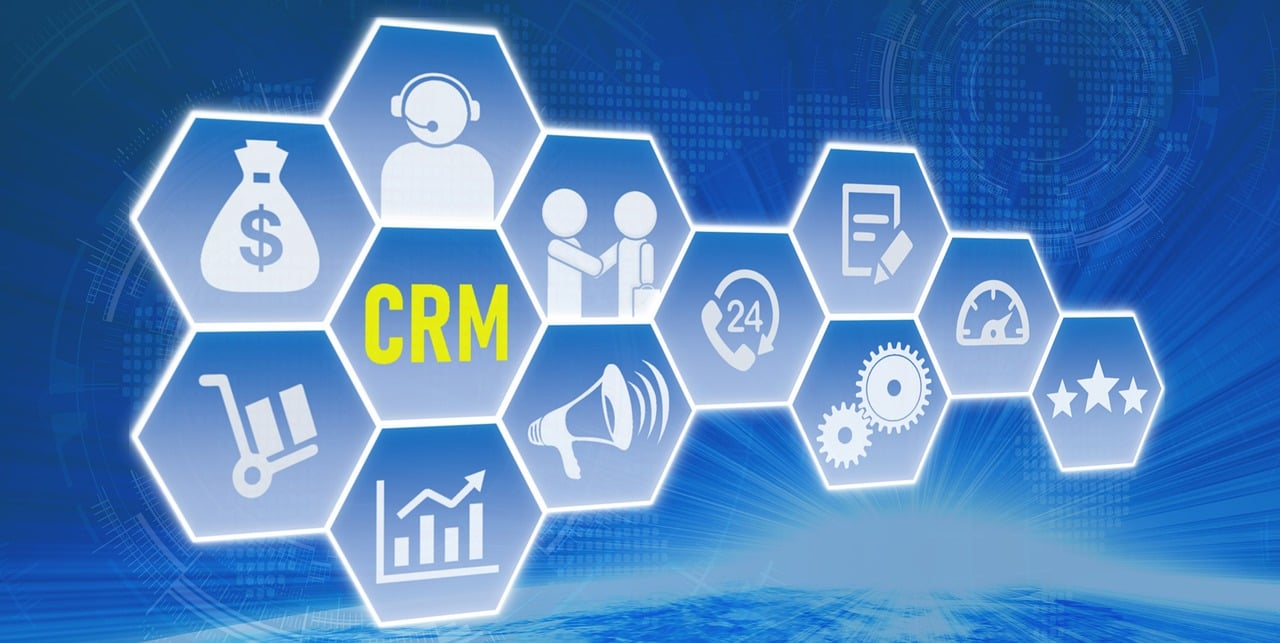
Image source: Pixabay.com
A robust CRM system serves as the nucleus of B2B lead generation efforts. It enables businesses to organize and track interactions with potential clients, ensuring no valuable lead falls through the cracks. By maintaining a comprehensive database of sales leads, your business or sales team can nurture relationships and tailor marketing approaches based on individual needs.
Integrating CRM systems with tools like email marketing platforms and analytics solutions enhances the overall lead-gen process. This integration streamlines workflows, ensures consistent communication, and provides a holistic view of lead interactions.
Marketing Automation Platforms
Marketing automation platforms enable businesses to automate repetitive tasks, freeing up valuable strategic planning and engagement time. Whether it is managing email campaigns or scheduling social media posts automation ensures efficiency and consistency in lead-gen efforts.
Automation platforms facilitate the delivery of personalized messages at scale. By segmenting your audience and tailoring content based on individual preferences, you can deliver relevant messages that resonate with potential clients, fostering more robust connections.
Analytics and Tracking Tools
Analytics tools provide insights into lead behavior, allowing your sales team to understand how potential customers or clients interact with your content and website. This information helps educated decision-making because it allows you to adjust approaches to relate well with your target audience.
Data-driven optimization is a cornerstone of a successful lead generation process. Analytics tools reveal which strategies drive the most engagement, which channels perform well, and where improvements can be made. This iterative approach ensures that your lead gen efforts are continually refined for maximum impact.
Nurturing and Converting B2B Leads
It is not enough to generate leads there’s a need to go through a nurturing process to convert them into paying clients. These processes ensure potential clients are engaged, informed, and eventually guided toward becoming valued customers. Here are the critical lead nurturing processes and conversion within B2B lead generation.
Lead Qualification
Lead qualification or scoring involves assigning a numerical value to leads depending on their degree of engagement, demographics, and behavior. Businesses can prioritize leads with a higher likelihood of conversion by defining specific criteria, such as job role, company size, and engagement frequency.
Effective lead scoring enables the identification of sales-qualified leads. These prospects have demonstrated a strong interest in your offerings, engaged with content, and fit your target criteria. Identifying and passing these sales leads to the sales and marketing teams streamlines the conversion process.
Lead Nurturing
Lead nurturing revolves around providing consistent value to potential clients. This is achieved by delivering relevant, educational content that addresses their pain points and challenges. Nurturing content showcases your expertise and establishes a rapport, gradually building trust.
During the lead nurturing phase, it’s crucial to address any objections or concerns that potential clients may have. Tailor your content to alleviate these worries and provide solutions, demonstrating your commitment to helping them overcome challenges.
Call-to-Action (CTA) Optimization
Well-placed CTAs guide leads toward taking desired actions. Whether signing up for a webinar, downloading an ebook, or requesting a demo, strategically placing CTAs within your content nudges potential clients toward the next step in the conversion journey.
Common Challenges Associated With B2B Lead Generation and Strategies for Overcoming Obstacles
Navigating the landscape of B2B lead generation is not without its challenges. By identifying these hurdles and exploring effective strategies, businesses can navigate the complexities of lead generation with resilience and ingenuity. Some of the common challenges that businesses often encounter in the realm of B2B lead generation include:
- Lack of Quality Leads
Generating high-quality leads that will align with your target criteria can be a challenge. Many leads may not fit your offering well, requiring careful qualification.
- Long Sales Cycles
B2B sales cycles are longer due to the involvement of multiple decision-makers and thorough evaluations. This extended process requires patience and consistent nurturing.
- Content Relevance
Ensuring your content resonates and relates with your target audience specifically can be demanding. This is because it requires in-depth research, understanding, and optimization.
Alongside these challenges, there are, however, some effective strategies and tactics that can help businesses triumph over these barriers and create a robust lead-gen engine. They include:
- Segmentation and Targeting
Refine your targeting strategy by segmenting your audience based on industry, company size, and roles. This approach ensures that your efforts are focused on those most likely to convert.
- Personalized Content
Customize your content in order to meet the needs of your target audience. Conduct thorough research to understand their challenges and preferences, then create content that speaks directly to them.
- Lead Nurturing Campaigns
Develop comprehensive lead nurturing campaigns that deliver value at every customer journey stage. Addressing pain points and providing solutions builds trust and keeps leads engaged.
- Use of Technology
Leverage CRM systems, marketing automation platforms, and analytics tools to streamline lead gen processes. This enhances efficiency and helps you make informed decisions.
- Data Analysis
Regularly analyze data to identify possible areas for improvement. Adjust your strategies based on insights from lead behavior, engagement metrics, and conversion rates.
Conclusion
B2B lead generation involves identifying, engaging, and nurturing potential clients for meaningful partnerships. Unlike businesses where you sell directly to customers, a B2B business targets other businesses therefore, key concepts like relationship building, proper audience research, value proposition, and trust play pivotal roles in B2B lead generation.
This article discussed a series of essential b2b lead generation strategies, including content marketing, SEO, social media engagement, email marketing, webinars and events, and account-based marketing. We have also explored some important tools, including CRM, analytics, and marketing automation technologies, that can aid your B2B lead generation efforts. By leveraging these strategies and resources, businesses can enhance their efficiency, gain valuable insights, and rapidly navigate the complexities of modern lead generation.
As we conclude this article, we’ve also explored the pivotal processes of nurturing and converting B2B leads. These strategies are instrumental in transforming potential clients into loyal customers, capitalizing on the groundwork laid through effective lead-gen, marketing and, sales efforts.
Moreover, navigating the landscape of B2B lead generation is not without its challenges. However, these challenges, such as lead quality, lengthy sales cycles, and content relevance, can be addressed with strategic solutions. By acknowledging and addressing these challenges head-on, businesses can proactively optimize their B2B lead generation efforts and achieve sustainable success.
Finally, the world of B2B lead generation is ever-evolving, and by implementing these techniques for generating leads, you’re poised to drive growth, foster valuable connections, and position your business as a leader in your industry.
Remember, successful B2B lead generation is not a singular endeavor but an ongoing commitment. Continuously refine your strategies and sales process, embrace emerging technologies, and adapt to changing customer behaviors. Doing so will unlock new opportunities and chart a course for lasting success in B2B lead generation.
The Role of Personalization in Lead Conversion Rates
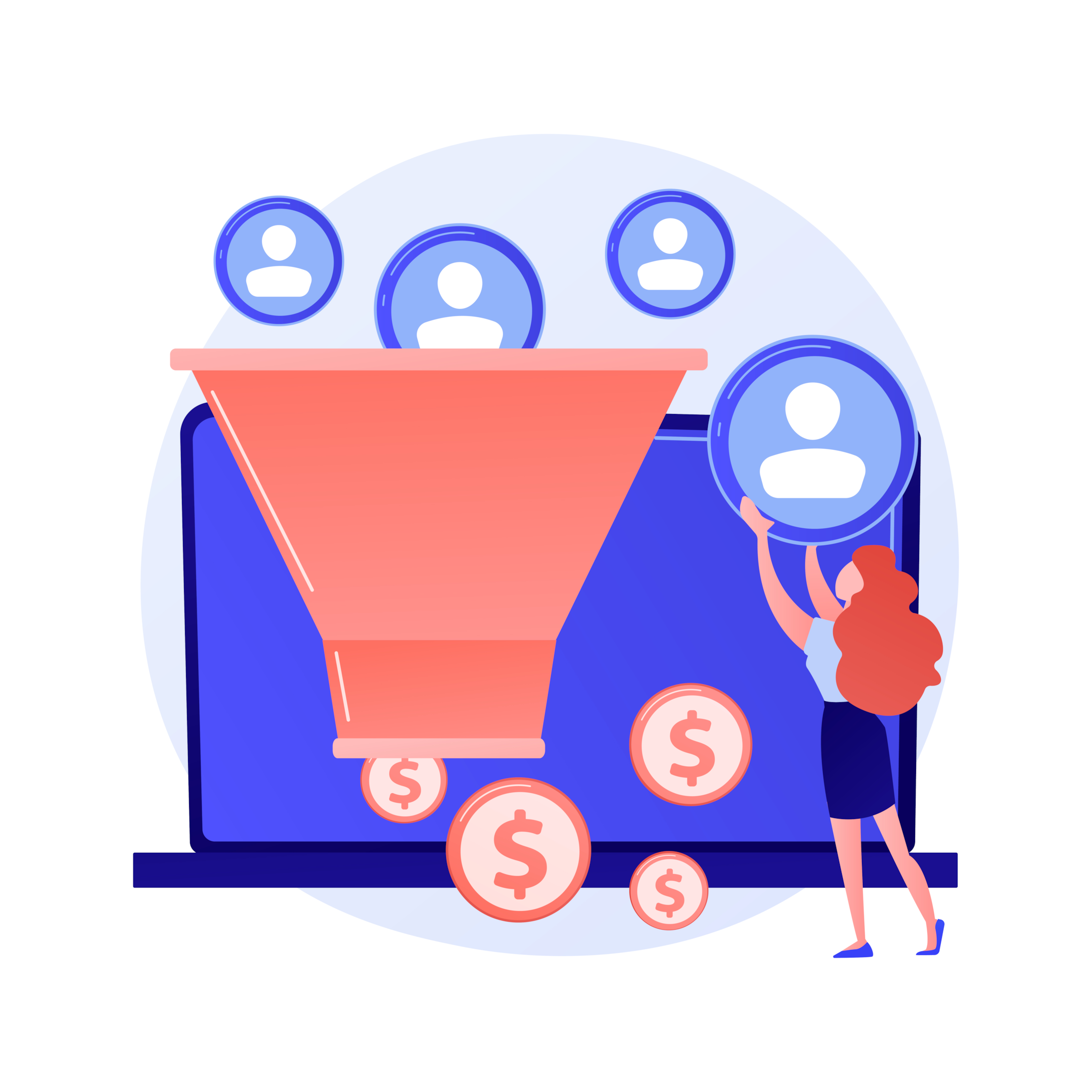
Image Source: Freepik
Ever felt like a brand was speaking directly to you? That’s the power of personalization. In today’s digital age, consumers crave personalized experiences. But how does this translate to lead conversion rates? Let’s dive in!
Table of Contents
Introduction to Personalization

Image Source: Freepik
What is Personalization?
Think of personalization as the magic behind every meaningful conversation. It’s when brands remember the little things about you, just like a friend recalling your favorite song or coffee. Personalization dives deep into understanding individual preferences, behaviors, and past interactions to craft experiences that truly resonate. This isn’t just about making users feel special; it’s a game-changer for lead conversion. When businesses get personalization right, they’re not just talking—they’re connecting. And that connection? It’s the golden ticket to skyrocketing lead conversion rates, turning fleeting interactions into lasting relationships. In the world of business, personalization isn’t just nice to have—it’s the cornerstone of lead conversion success.
Why is Personalization Important?
In today’s digital landscape, where users are inundated with a deluge of generic content, personalized experiences shine like a beacon. They’re not just content; they’re tailored narratives that speak directly to the individual. This is where the lead conversion strategy truly comes to life. Personalization enhances customer satisfaction by ensuring that every interaction feels handpicked, making users more inclined to engage and interact.
But why stop at engagement? The lead conversion process is supercharged when personalization is at its core. A higher lead conversion rate isn’t just a number; it’s a testament to the power of personalization. Lead generation becomes more effective, and sales and marketing teams can work in harmony, using tools like lead scoring to prioritize and convert leads with precision.
In essence, personalization isn’t just a tactic; it’s the backbone of a robust lead conversion strategy. It bridges the gap between mere visibility and genuine connection, ensuring that every touchpoint moves a potential customer closer to conversion. For businesses aiming to elevate their lead conversion rate and foster lasting relationships, personalization is the linchpin.
The Mechanics of Personalization
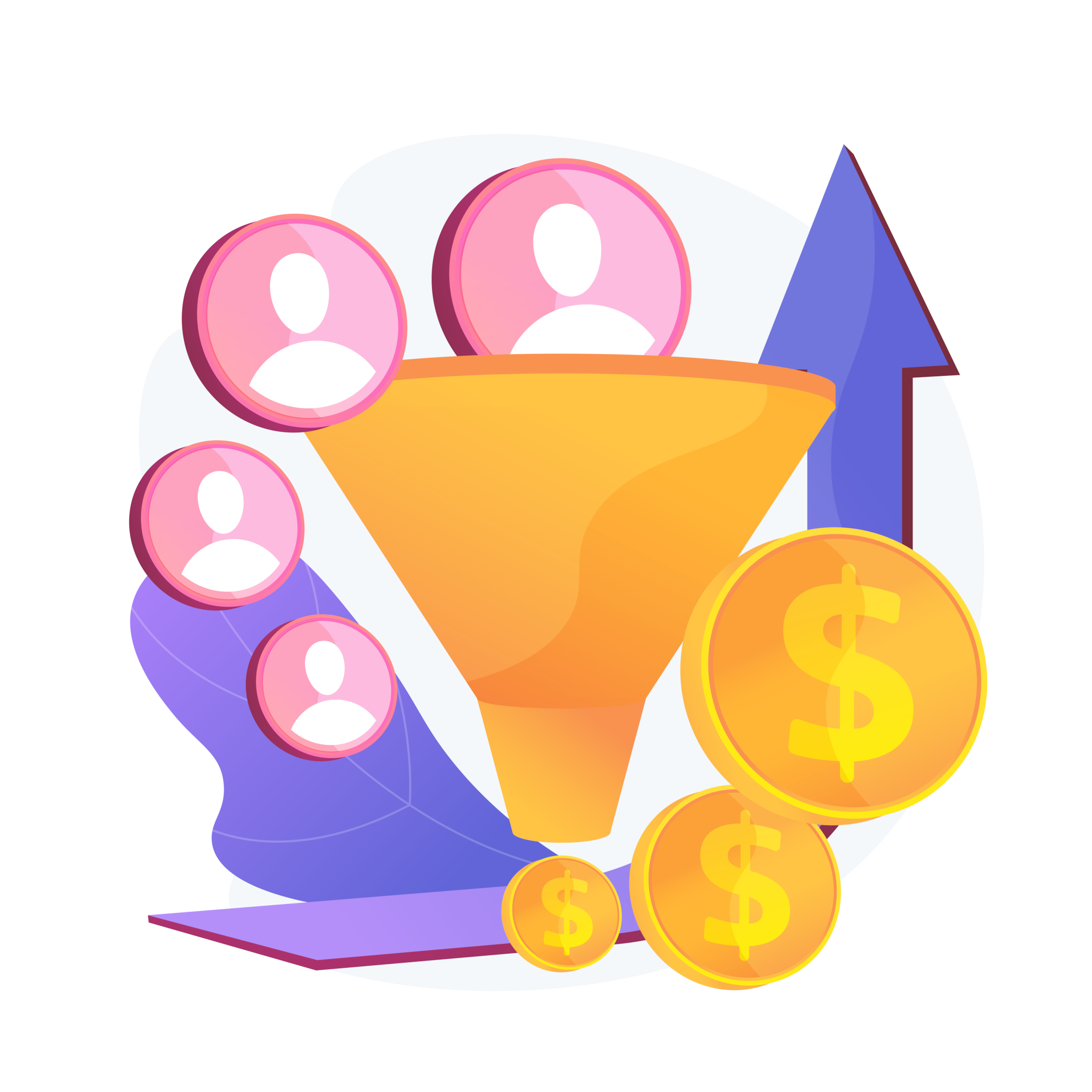
Image Source: Freepik
Data Collection and Analysis: The Heartbeat of Personalization
In the intricate dance of personalization, data collection and analysis play the lead role. It’s more than just numbers and graphs; it’s the pulse of understanding what makes your audience tick. By meticulously gathering data on user behavior, preferences, and demographics, businesses aren’t just amassing information—they’re crafting a vivid portrait of their audience. This portrait becomes the compass for sales and marketing teams, guiding them in their lead conversion strategy.
But it doesn’t end there. The lead conversion process is enriched when this data-driven insight is applied. With a clear picture of their audience, businesses can fine-tune their lead generation efforts, ensuring that every message, every offer, resonates deeply. This not only boosts the lead conversion rate but also elevates customer satisfaction. After all, when content feels tailor-made, it’s a testament to a brand’s commitment to truly understanding and valuing its audience.
In the grand scheme of converting leads and building lasting relationships, data collection and analysis are the unsung heroes. They empower businesses to move beyond generic outreach, laying the foundation for a lead conversion strategy that truly hits the mark.
Implementing Personalized Strategies
Armed with rich data, the next step is not just to observe, but to ignite change. Implementing personalized strategies is where the magic truly happens. Imagine a world where every email feels like it was written just for you, where website content speaks to your unique interests, and product recommendations echo your past choices. That’s the power of personalized strategies in action.
For sales and marketing teams, this is the moment where the lead conversion strategy takes center stage. Targeted emails become more than just messages; they’re personalized invitations, beckoning users to engage. A website transforms from a static platform to a dynamic space that evolves with the user, enhancing the lead conversion process at every click. And product recommendations? They’re not mere suggestions; they’re evidence of a brand’s commitment to understanding and catering to its audience, boosting both lead conversion rate and customer satisfaction.
In the vast arena of lead generation, implementing personalized strategies is the game-changer. It’s the bridge between data collection and tangible results, ensuring that every effort is laser-focused on converting leads and fostering genuine connections.
Personalization and Lead Conversion

Image Source: Unpslash
The Direct Impact on Conversion Rates
There’s a profound difference between being seen and being understood. Personalized experiences don’t just catch the eye; they tug at the heartstrings. When a user senses that a brand truly ‘gets’ them, it’s like a silent conversation where trust is built without words. This connection, this understanding, propels them to take action. Whether it’s signing up for a newsletter, sealing the deal with a purchase, or reaching out via a contact form, the journey feels natural and intuitive.
For sales and marketing teams, this is the golden hour. Their lead conversion strategy, when infused with personalization, becomes a powerful magnet, drawing users in. The lead conversion process becomes less about persuasion and more about alignment, seamlessly guiding users to the desired outcome. The result? A surge in the lead conversion rate, a testament to the potent blend of personal touch and strategic intent.
In the intricate dance of lead generation and conversion, personalization is the rhythm that sets the pace. It’s the force that transforms passive observers into active participants, ensuring that every interaction is a step closer to conversion.
Streaming Giants and the Power of Personalization
Consider the behemoths of the streaming world: Netflix and Spotify. At the heart of their success lies a masterclass in personalization. It’s not just about presenting content; it’s about curating experiences tailored to the individual. Their personalized recommendations are more than just suggestions; they’re a roadmap, guiding users through a journey of discovery. This deep engagement doesn’t just keep users hooked; it translates to increased subscription rates and longer watch/listen times.
But what can businesses learn from this? At the core, it’s a testament to how personalization can revolutionize the sales process. By understanding and anticipating the needs and preferences of the target audience, companies can craft a customer journey that feels both intuitive and enticing. This not only aids in new leads but ensures that these leads are qualified, ready to be nurtured and converted.
Automation software plays a pivotal role here, streamlining the process and ensuring that personalized content reaches the right eyes and ears at the right time. The result? Enhanced customer loyalty, as brands consistently deliver value and relevance, much like Netflix and Spotify do for their audiences.
In the competitive landscape of lead generation and conversion, personalization stands out as the secret sauce. It’s the bridge between understanding your audience and guiding them seamlessly through the sales process, ensuring that every touchpoint reinforces trust and drives action.
The Future of Personalization

Image Source: Unsplash
Emerging Trends and Technologies
As we stand on the cusp of a new era, personalization is undergoing a transformative shift. The landscape of emerging trends and technologies paints a vivid picture of what’s to come. With the meteoric rise of AI and machine learning, the game is no longer just about understanding user behavior and preferences; it’s about anticipating them.
Imagine a world where businesses don’t just react but proactively shape the customer journey. Where the sales process is not just informed, but is foresighted, predicting the needs and desires of the target audience even before they do. This is the promise of AI-driven personalization. It’s about generating leads with precision, ensuring that every interaction is not just relevant but resonant.
Automation software will evolve, becoming the backbone of this new age of personalization, seamlessly integrating AI insights to craft experiences that are both intuitive and innovative. This will not only enhance customer loyalty but will redefine it, as brands consistently stay a step ahead, delivering value in ways previously unimagined.
In the ever-evolving dance of lead generation and conversion, the future of personalization beckons with promise. It’s a world where technology and human insight merge, crafting a narrative that’s not just personalized but prescient, forever changing the way we connect, engage, and convert.
Navigating the Delicate Balance of Personalization
In the realm of personalized marketing, the horizon is both promising and challenging. With the immense power to tailor experiences to individual customer segments comes an equally significant responsibility. The allure of creating a very personalized way for creating leads and crafting conversion strategies, also treads a fine line.
Data management is at the heart of this challenge. As businesses gather and analyze vast amounts of information to better understand their audience and produce qualified leads, they must also ensure that this data is handled with the utmost care and integrity. The risk? Over-personalization. It’s a scenario where the very tools meant to enhance the user experience inadvertently make them feel their privacy is under siege.
The journey ahead for businesses is to strike the right balance. To harness the power of personalization while respecting the boundaries of their audience. It’s a dance of understanding not just what the customer wants, but also recognizing the limits of the personalized experience.
In the quest for lead generation and crafting effective conversion strategies, businesses must tread carefully, ensuring that their pursuit of personalization enhances, rather than alienates, their audience.
Tips for Effective Personalization

Image Source: Unsplash
The Art of Truly Knowing Your Audience
At the heart of every successful personalized marketing campaign lies a fundamental truth: understanding your audience is paramount. It might seem elementary, but the depth of this understanding can make or break your personalization endeavors.
To craft a truly personalized experience, it’s not enough to have a static snapshot of your customer segments. The landscape of preferences, needs, and behaviors is ever-evolving. As such, data management becomes crucial. Constantly updating and refining user profiles ensures that your strategies remain relevant and resonate deeply.
Making leads and converting them into qualified leads isn’t just about showcasing what you offer; it’s about aligning your offerings with the genuine needs and desires of your audience. And this alignment can only be achieved when you’re in tune with your audience’s pulse.
In the grand tapestry of conversion strategies, remember this: Personalization is not a one-size-fits-all approach. It’s a dynamic dance, one that requires attentiveness, adaptability, and a genuine commitment to understanding and serving your audience.
Use the Right Tools
Harnessing AI and Machine Learning for Precision and Insight
In the modern landscape of personalized marketing, the tools you employ can be the difference between a fleeting interaction and a lasting connection. AI and machine learning stand at the forefront of this revolution, offering capabilities that were once the stuff of science fiction.
Predictive analytics, powered by these technologies, allows the sales team to delve deep into vast data reservoirs, identifying patterns with unparalleled speed and accuracy. This isn’t just about understanding the present; it’s about forecasting the future. By predicting future behavior, sales teams can tailor their approach, ensuring that every personalized email, every interaction with a sales rep, is not just relevant but prescient.
The result? A surge in more qualified leads, a boost in the conversion rate, and a seamless transition of these leads into paying customers. The marketing department, armed with these insights, can craft campaigns that resonate deeply, giving businesses a competitive advantage in a crowded marketplace.
However, with this power comes the responsibility to protect customer privacy. As we harness these tools to refine the sales funnel, it’s imperative to ensure that customer privacy remains sacrosanct, striking a balance between personalization and discretion.
Customer Relationship Management (CRM) Systems
In the intricate world of digital marketing, the Customer Relationship Management (CRM) system emerges as a pivotal tool. It’s not just a repository; it’s a treasure trove of insights. CRMs meticulously store valuable data on customers, allowing businesses to delve deep into the nuances of their audience’s preferences and behaviors.
This granular understanding is transformative. By harnessing the power of CRMs, businesses can tailor every aspect of their marketing efforts, from the landing page design to the subtlest call-to-action. Best practices are no longer generic; they’re shaped by real, actionable insights. Whether it’s offering early access to a sought-after product or showcasing social proof that resonates with a specific lead based on their past interactions, CRMs empower businesses to make every touchpoint count.
The result? A surge in more leads, each one more qualified than the last. Sales reps, armed with CRM insights, can navigate the sales pipeline with precision, ensuring that potential customers are engaged, nurtured, and converted with finesse.
In essence, CRM systems are the compass guiding businesses through the vast seas of digital marketing. By understanding where each customer stands and where they might be headed, businesses can craft experiences that are not just personalized but profoundly impactful.
Conclusion
In the bustling digital landscape where consumers navigate a sea of content, personalization emerges as a lighthouse, guiding them with relevance and trust. Its influence on lead conversion rates is profound and undeniable. By embracing personalization, businesses not only drive growth but also weave lasting bonds of loyalty, setting themselves apart from the competition. And as we look to the horizon, with advancements like AI shaping the future, the realm of personalization promises to be a thrilling odyssey, brimming with untapped potential and innovation.
Why Analytics Matter in Lead Acquisition Success
In the bustling digital marketplace, where countless voices vie for attention, standing out is both an art and a science. Businesses are no longer just competing based on products or services; they’re competing on understanding, agility, and foresight. At the heart of this new competitive landscape lies analytics.
More than just numbers or graphs, analytics is the compass that guides businesses through the intricate maze of customer desires, market trends, and evolving behaviors. As we delve into the pivotal role of analytics in lead acquisition success, we’ll uncover how it’s not just about attracting potential customers, but about forging meaningful, lasting connections in an ever-changing digital world.
Table of Contents
The Digital Age Dilemma
Ah, the Digital Age. A time when our fingertips dance across screens, accessing a world of information in mere seconds. But here’s the catch: while this era has revolutionized customer acquisition, it’s also flooded us with an almost paralyzing amount of data. Every click, every scroll, every interaction is a piece of the puzzle, and businesses are often left scratching their heads, wondering how to make sense of it all.
Image Source: Unsplash
Lead acquisition, that coveted process of attracting and converting potential customers, has become both an art and a science. The sheer volume of data can be daunting. But here’s the silver lining: within this data lies the secret to crafting a lead acquisition strategy that’s not just effective but transformative.
You see, lead acquisition isn’t just about getting any leads; it’s about getting high-quality leads. Those golden nuggets that are more likely to transition from mere interest to genuine purchase. And in this vast digital ocean, how do you fish for these high-quality leads? That’s where the lead acquisition process, refined and honed, comes into play.
But let’s face it, without a clear lead acquisition strategy, even the most seasoned businesses can find themselves lost in the noise, struggling to differentiate between mere data and actionable insights. The challenge? To sift through this information overload and pinpoint what truly matters for lead generation.
Every business dreams of a streamlined lead acquisition process, one that consistently reels in qualified leads. But in the Digital Age, achieving this requires more than just hope. It demands a deep dive into the data, a commitment to understanding the nuances of lead acquisition, and the tenacity to adapt and evolve.
In essence, while the Digital Age presents challenges in lead acquisition, it also offers unparalleled opportunities. The key? To navigate the noise, harness the data, and craft a lead acquisition strategy that’s both robust and responsive.
Beyond Gut Feelings
Images Source: Unsplash
There’s a certain romanticism in trusting one’s gut, a nostalgic nod to the days when business decisions were made over handshakes and intuition ruled the roost. But let’s get real for a moment. In today’s complex landscape of lead acquisition, relying solely on gut feelings is like setting sail without a compass. Sure, you might catch a favorable wind now and then, but is it sustainable? Probably not.
The sales and marketing teams of yesteryears might have thrived on intuition, but today’s digital realm demands more. The customer acquisition process has evolved, becoming a sophisticated dance of data and strategy. And in this dance, every step, every move, is informed by data-driven insights.
Why? Because data doesn’t lie. While intuition can sometimes hit the mark, data-driven decisions consistently guide sales and marketing teams towards higher conversion rates. Think of it this way: Would you rather cast a wide net, hoping to catch leads based on a hunch, or would you prefer a targeted approach, using lead scoring to identify and pursue the most promising prospects?
The sales team, armed with actionable insights, can tailor their pitches, ensuring they resonate with potential customers. Marketing messages, instead of being generic, can be crafted to speak directly to the needs and desires of the audience, significantly boosting the chances of generating leads.
And let’s talk about the bottom line: revenue growth. A hunch might lead to a one-off win, but a systematic, data-driven approach to lead acquisition? That’s the secret sauce for sustained growth, ensuring that every effort, every campaign, is optimized for success.
In conclusion, while gut feelings have their charm, the future of lead acquisition lies in the harmonious marriage of intuition and data. It’s about sales and marketing coming together, leveraging data to craft strategies that not just attract but also convert, driving the business forward in a competitive landscape.
The Analytics Advantage
Image Source: Unpslash
In the grand tapestry of today’s business landscape, analytics emerges as the golden thread weaving success stories. It’s not just about numbers or graphs; it’s about deriving actionable insights that can transform the way businesses approach their strategies.
- Decipher Consumer Behavior: Ever wondered why a user clicked on a particular marketing message or why they abandoned their cart just before checkout? Analytics delves into the ‘why’ behind these actions. By understanding consumer behavior, sales and marketing teams can craft messages that resonate, turning potential customers into valuable leads. It’s like having a conversation with your audience without them saying a word, and then tailoring your approach based on that silent feedback.
- Predict Future Trends: The past often holds clues to the future. By analyzing historical data, businesses can forecast potential market shifts. This foresight is invaluable, allowing sales teams to be proactive rather than reactive. Imagine knowing which marketing channels will be the most effective next quarter or predicting a surge in interest for a particular product. That’s the power of analytics, guiding an effective marketing strategy that’s always one step ahead.
- Optimize Marketing Budgets: In an era where every dollar counts, ensuring maximum ROI is paramount. Analytics plays a pivotal role here. By understanding which marketing channels are delivering the most valuable leads, businesses can allocate their budgets more efficiently. It’s not about spending more; it’s about spending smart. Crafting an effective marketing strategy means knowing where to invest, ensuring that every campaign, every message, is optimized for success.
In essence, the analytics advantage is clear. It’s the compass that guides businesses through the complex maze of consumer behavior, market trends, and budget allocations. By harnessing its power, businesses can craft strategies that are not just effective but transformative, ensuring that every effort is laser-focused on driving growth and success.
Real-world Wins
In the vast world of business, there’s nothing quite as compelling as a success story, especially when it’s rooted in the power of analytics. Let’s dive into a few ways businesses have turned the tide in their favor.
Image Source: Unsplash
Imagine a startup that struggled with lead qualification. They had leads, sure, but were they the right ones? By harnessing analytics, they revamped their lead generation strategy. Instead of casting a wide net, they began to target with precision. The result? They started generating high-quality leads that were not just interested but ready to engage.
Then there’s the story of a mid-sized company unsure of where to allocate their marketing budget. They had run multiple lead generation campaigns, but the results were hit or miss. Enter analytics. By diving deep into their past marketing efforts, they identified which campaigns resonated most with their target market. This insight allowed them to optimize their marketing content, ensuring that every dollar spent was hitting the mark.
Lead generation refers to the process of attracting potential customers, but it’s not just about quantity; it’s about quality. Another business, initially overwhelmed by the sheer volume of leads, turned to analytics to streamline their lead generation process. Sales reps were equipped with data-driven insights, enabling them to effectively track and nurture potential customers through the sales funnel, leading to a significant boost in lead conversion.
In each of these stories, a common thread emerges: the transformative power of analytics. Whether it’s refining a lead generation strategy, optimizing a marketing budget, or ensuring that marketing content resonates, analytics offers businesses a roadmap to success. It’s a testament to the fact that in the world of lead generation, knowledge isn’t just power; it’s the key to unlocking unparalleled growth and success.
The Human Touch in a Data-Driven World
In the age of algorithms and predictive analytics, it’s easy to forget the irreplaceable value of human intuition. But here’s the thing: while data can offer valuable insights, it’s the human touch that breathes life into these numbers, turning them into actionable strategies.
Image Source: Unsplash
Take, for instance, the world of email marketing. Analytics can provide different metrics – open rates, click-through rates, and lead conversion rates. But it’s the marketer who understands the buyer personas, their pain points, and desires, who crafts email campaigns that truly resonate. Data might tell you that a particular campaign didn’t perform well, but it’s the human interpretation that discerns why and how to adjust for future campaigns.
Or consider the challenge to acquire leads. Predictive analytics can forecast potential trends, guiding where the marketing spend might be most effective. Yet, it’s the sales rep’s understanding of a lead’s hesitations, their personal stories, and their unique needs that can turn a potential lead into a part of the customer base.
In essence, while data provides a competitive advantage, offering a bird’s eye view of trends and patterns, it’s the human element that dives deep, understanding the nuances and emotions that data alone can’t capture. The best strategies? They don’t rely solely on numbers or intuition but merge the two. They combine the precision of analytics with the empathy and understanding of human interpretation, ensuring a holistic approach that resonates on both a logical and emotional level.
Navigating the Future Landscape of Analytics in Lead Acquisition
Image Source: Unsplash
As we cast our gaze forward, the horizon of lead acquisition is shimmering with possibilities. Many businesses are already harnessing the power of AI-driven predictions, diving deep into website analytics to gain a better understanding of their audience. But the future promises even more.
Imagine real-time data adjustments that not only track website traffic but also instantly identify opportunities to engage a new lead. As the digital realm evolves, the ability to pinpoint the exact lead source or map out the intricate pathways of the customer journey becomes invaluable. This isn’t just about collecting data; it’s about transforming data collection into actionable insights.
For businesses aiming to stay ahead of the curve, this means constantly adapting and refining their strategies. A high conversion rate today doesn’t guarantee success tomorrow. But with a keen eye on analytics, businesses can craft effective strategies that not only generate more leads but also ensure these leads are nurtured and converted with precision.
In essence, the future of lead acquisition analytics is a blend of technology and strategy, where real-time insights and foresight converge, empowering businesses to navigate the ever-evolving digital landscape with confidence and agility.
Final Thoughts
Image Source: Unsplash
In the intricate dance of the digital age, where customers flit between social media platforms and websites, the rhythm that keeps businesses in step is analytics. It’s more than just a tool to monitor website visitors or tally social media interactions; it’s the heartbeat of understanding the nuanced journey of every customer.
But here’s where the magic truly lies: analytics isn’t just a passive observer. It’s an active guide, directing businesses to the right channels, ensuring that every interaction, every piece of content, is not just seen but felt. With the prowess of machine learning, the creation of personalized content isn’t a luxury—it’s a necessity. This content isn’t just tailored; it’s a reflection of the audience’s desires, a mirror that shows them what they seek.
Every lead, every click, tells a tale. And to weave these tales into success stories, businesses must not only listen but also act. The process of lead acquisition is evolving, and at its core is personalized content, acting as the North Star, guiding the way.
So, to businesses everywhere: Don’t just use analytics. Embrace it. Let it be your compass in the vast sea of digital interactions. With it, not only will you navigate the waters of lead acquisition with precision, but you’ll also chart new territories of success. In this journey, analytics isn’t just a tool—it’s your most trusted ally.
Strategies for Effective B2B Lead Acquisition

Image source: Pixabay.com
In a B2B (business-to-business) model, your primary clients or customers are other businesses. On the other hand, a B2C (business-to-consumer) business targets individual consumers. Although these two business models share many marketing and sales concepts, the techniques and methods employed in each model are tailored to the distinct qualities and preferences of their separate audiences.
Lead generation is another commonality fundamental to B2B and B2C businesses. However, the approaches and nuances in generating leads are distinct. Recognizing and adapting to these differences is vital to a successful lead-generation campaign in either context.
That said, this article will walk you through essential strategies and tips for effective B2B lead acquisition. We will also look at the benefits of B2B lead generation and offer insights, methods, and practical approaches to help you navigate this complex terrain. Let’s dive in!
Table of Contents
Understanding B2B Lead Acquisition
B2B lead acquisition is fundamentally about the systematic approach of discovering and fostering relationships with potential business customers who have demonstrated a genuine interest in the products or services your company provides. In simpler terms, it means finding and nurturing potential business customers interested in your offer.
This effective approach involves various strategies and techniques to identify and engage with prospects and ultimately guide them toward becoming valued clients. It’s vital to business growth and sales, requiring careful planning, consistent effort, and effective communication to convert sales-qualified leads into loyal customers.
Generally, B2B lead acquisition requires a deep understanding of the unique dynamics of the business environment. It demands a strategic, personalized, and relationship-focused approach to identify and convert qualified leads into potential business clients.
As previously stated, B2B and B2C are two different business models. As the names imply, B2B refers to businesses selling to other businesses, whereas B2C refers to businesses selling directly to consumers. Understanding these differences is vital in tailoring your approach effectively. Here’s how the disparities influence lead-generation strategies:
- Complex Decision-Making: B2B purchases often involve multiple stakeholders, marketing and sales teams, and decision-makers within a company who may need to evaluate your offering. This will lead to longer sales cycles and a need for tailored communication to address each stakeholder’s concerns.
- Lead Nurturing: B2B leads may require more extended and personalized nurturing sequences. Whereas B2C often focuses on prompt conversion through one-click purchases or limited-time offers.
- Metrics: The metrics for success differ. B2B often tracks metrics like lead-to-opportunity conversion rates and customer lifetime value. On the other hand, B2C may focus more on conversion rates, cart abandonment, and customer retention.
- Longer Sales Cycles: B2B sales typically have extended sales cycles because of the complexity of the products or services sold and the need for extensive research, negotiations, and approvals. Patience and persistence are essential.
- Customization: B2B customers often require tailored solutions to meet their business needs. This can be resource-intensive and may involve custom product development or service offerings.
- Volume and Value: B2B deals typically involve higher volumes and values than B2C transactions. While this can mean larger revenue potential, it also increases each sale’s stakes and importance.
- Regulations and Compliance: B2B transactions may be subject to industry-specific regulations and compliance requirements, adding complexity to the sales process and necessitating a deep understanding of these rules.
- Price Negotiation: Price negotiation is typical in B2B sales. Businesses often seek discounts or preferential terms, and finding a mutually beneficial agreement can be challenging.
- Marketing and Sales Channels: B2B marketing and sales strategies differ from B2C. This includes using specialized channels like trade shows, industry events, and targeted online marketing.
Effective B2B Lead Acquisition Strategies
Companies that excel in lead generation often have a strategic advantage, as they can identify and engage with potential customers effectively, leading to sustainable growth and success. By identifying and engaging with the right prospects, businesses can:
- Expand Their Customer Base: Acquiring new B2B leads allows companies to tap into new markets, industries, or segments, driving revenue growth.
- Increase Revenue: Converting leads into customers results in increased sales and revenue, which is essential for sustainability and profitability.
- Build Brand Reputation: Effective lead acquisition strategies help businesses establish themselves as experts in their field, enhancing brand credibility and trust.
- Drive Innovation: Engaging with potential customers can provide valuable insights that lead to product or service improvements and innovation.
- Enhance Market Position: By consistently acquiring leads, businesses can strengthen their market position and remain competitive.
- Boost ROI: Efficient lead acquisition strategies can lead to a higher return on investment, as marketing efforts are directed toward qualified prospects more likely to convert.
Indeed, effective B2B lead acquisition is crucial for business growth. Here are some strategies to consider:
Research and Analysis
Before launching into your B2B lead acquisition endeavors, laying a solid foundation through rigorous research and analysis is essential. Begin by segmenting your target market or audience into distinct categories. This can include industry, company size, geographic location, and more. A well-defined market segment enables you to tailor your marketing efforts effectively.
It is essential to understand the behaviors and preferences of your target market and audience. Map out the decision-making process within your target organizations. Identify who the key decision-makers are, what factors influence their choices, and how they typically evaluate potential solutions. This knowledge helps you craft tailored messages and offers that resonate with your prospects.
As part of your research, identify and analyze the key competitors in your B2B space. Then, determine what sets your business apart from the competition. Your unique selling proposition will help generate leads who resonate with your distinct value proposition.
Content Marketing Strategies
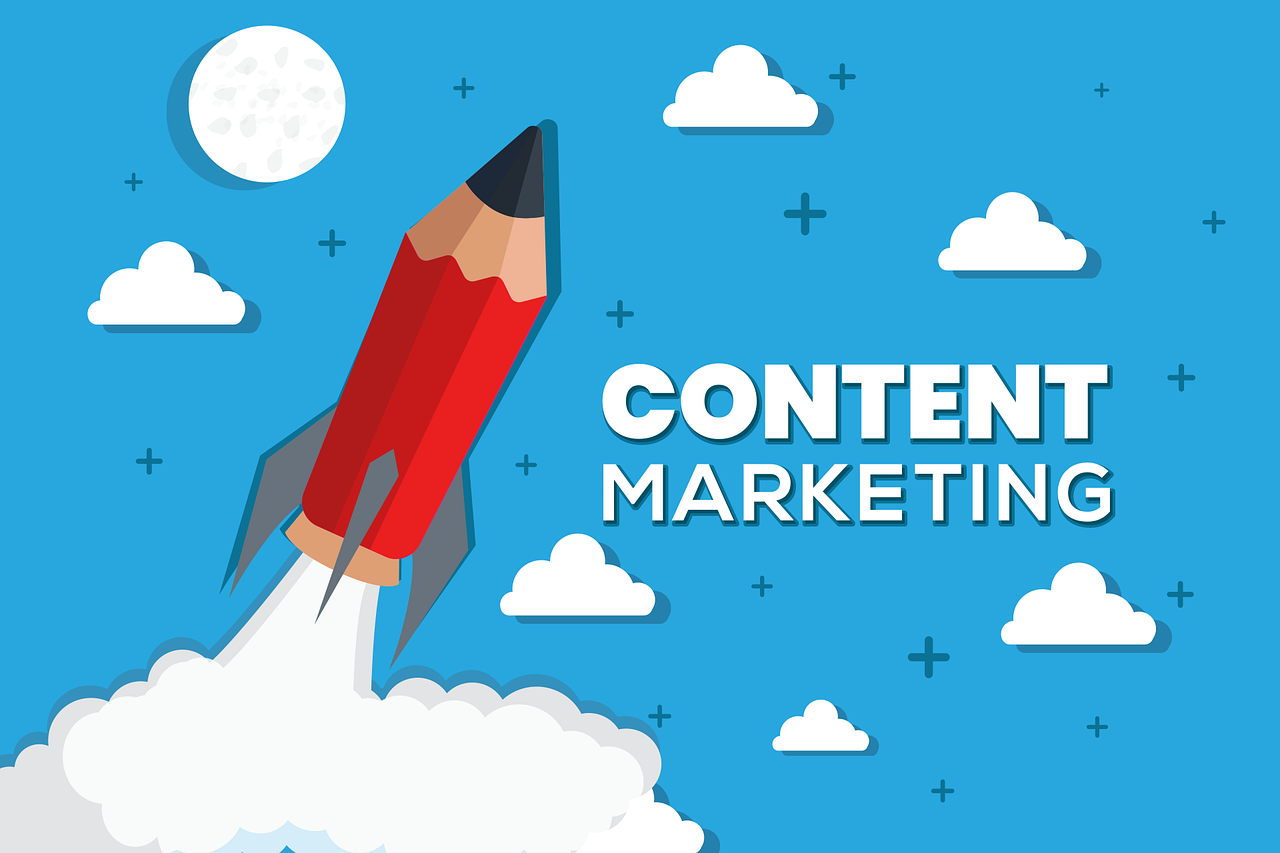
Image source: Pixabay.com
Content marketing is an effective approach for B2C lead generation, and it also plays a pivotal role in B2B lead acquisition. Tailor your content to resonate with different segments of your audience. This can include addressing specific challenges faced by various industries or organizational roles. Content that provides valuable insight and addresses their specific challenges is more likely to pique their interest.
Also, consistency is key in the content game. Aside from providing quality and valuable content, it is essential to maintain a consistent content schedule to keep your audience engaged. Regular updates demonstrate your commitment to delivering value and expertise in your industry.
However, you must always endeavor to actively weave lead generation into your content marketing strategy. This will ensure that your content is not just meant to provide value and insight but also to actively direct leads to your website or landing pages. An effective approach will be to include clear CTAs, lead magnets, and lead capture forms to obtain contact information from your audience.
SEO and Online Presence
A solid online presence is crucial for B2B lead acquisition. SEO works hand-in-hand with content marketing. It helps your website and web content rank higher in search results, increasing visibility and credibility among potential leads. High-ranking websites are often perceived as more trustworthy.
Also, organic traffic acquired through SEO is cost-effective. It is a more effective approach compared to paid advertising. It can result in a steady flow of leads over time without continuous ad spending. You can increase your website’s organic visibility and attract new leads by optimizing your online presence for search engines.
Social Media Engagement

Image source: Pixabay.com
When it comes to lead generation or digital marketing at large, social media is indispensable. Leveraging social media platforms for generating quality leads is an effective approach. However, it is a different approach when using social media to generate B2B leads.
One of the best platforms to consider for your B2B lead acquisition efforts is LinkedIn. Being a professional networking platform, LinkedIn is a goldmine for B2B lead acquisition. Regularly share industry insights, engage with relevant groups, and connect with more leads to expand your network.
Also, ensure your company’s LinkedIn page has a compelling logo, cover image, and a detailed “About” section. Use keywords relevant to your industry to enhance discoverability. Post consistent updates that showcase your expertise, company culture, and achievements. Share thought leadership articles, company news, and success stories from your sales and marketing teams to engage your audience.
Twitter is also a dynamic platform for real-time engagement, like Facebook. Although Facebook is often associated with B2C marketing, it can still be a valuable B2B lead acquisition channel. Share valuable content, participate in industry conversations, and use relevant hashtags to increase your visibility.
Email Marketing Campaigns
Email marketing remains an effective approach in B2B lead acquisition. It can nurture leads through the sales funnel and convert them into loyal customers when executed effectively.
Begin by dividing your email list into segments based on criteria such as industry, job role, or previous interactions with your brand. You can tailor your email to each segment’s needs or pain points; the more relevant your content, the higher the chances of engagement and lead conversion.
Craft concise, engaging, and relevant email content that communicates your value and includes compelling calls to action (CTAs) that prompt recipients to take action. Also, ensure you personalize each email content to address recipients by name and tailor the message to their interests or needs. Personalization goes a long way in capturing the attention of potential leads.
Also, ensure your emails are mobile-friendly, as many professionals check their emails on smartphones. A responsive design ensures your message looks good and functions well on all devices.
Webinars and Events

Image source: Pixabay.com
Webinars and industry events provide valuable opportunities for B2B lead acquisition and engagement. It is an effective approach to connect with other businesses within your industry or niche. Therefore, to attract quality B2B leads, consider organizing periodic webinars and events around your industry or niche. Choose webinar subjects relevant to your target audience’s interests and pain points.
Encourage participants to register in advance for the webinar. During the webinar, engage with attendees through Q&A sessions, polls, and chat. Encourage active participation and interaction to make the session more valuable. You should follow up with attendees by sending them a thank-you email after the webinar or event and provide additional resources or offers that can nurture their interest.
Besides the ones you organize, you should also endeavor to attend other organized events in your industry or niche. Research and identify industry events, conferences, and trade shows that align with your target market, audience, and goals. Choose events where you can network with potential leads. If possible, secure a booth or presentation slot at the event. These opportunities provide a platform to showcase your expertise and engage with attendees.
Marketing Automation
Leverage technology through automation tools for streamlining your B2B lead acquisition and nurturing processes. Begin by choosing a marketing automation platform that suits your needs and ensure that your chosen marketing automation tool integrates seamlessly with your CRM system. These tools help automate marketing tasks, from email campaigns to lead tracking. They can also be used for:
- Drip Campaigns: Set up drip email campaigns that deliver pre-scheduled emails to leads over time. These campaigns can provide educational content, showcase product features, or address common objections.
- Personalization: Use automation to personalize emails and content based on lead behavior and preferences. Tailored content is more likely to engage and convert prospects.
- Lead Segmentation: Automatically segment leads based on their interactions and behaviors. You can then distribute highly relevant and high-quality material to each group.
- Lead Scoring: Create a lead scoring system that assigns values to leads based on their behaviors and involvement. Higher-scoring leads are more likely to be sales-ready.
- Lead Qualification: Define clear criteria for lead qualification. This helps your sales team prioritize leads and focus on those most likely to convert.
Marketing automation software ensures that your leads receive timely and relevant information while saving you time and money. Increase the quality of your leads and the efficiency of your B2B lead acquisition strategy by incorporating automation into your lead generation process.
Challenges and Pitfalls
Even in successful B2B lead generation campaigns, challenges and pitfalls can arise. Some common mistakes in B2B lead acquisition include:
- Lack of Targeting: Failure to establish a specific target audience might result in lost efforts and unproductive lead generation.
- Solution: Continuously refine your target audience criteria based on data and feedback. Ensure your efforts are directed toward high-quality leads.
- Neglecting Lead Nurturing: Overemphasizing lead generation without a corresponding focus on lead nurturing can result in missed opportunities.
- Solution: An effective approach solution is to strike a good balance between lead generation and lead nurturing. Provide valuable content at every stage of the buyer’s journey.
- Ignoring Data and Analytics: Neglecting to analyze data and track key metrics can lead to uninformed decisions and inefficiencies.
- Solution: Make data-driven decisions by regularly analyzing performance metrics. Use insights to adjust your strategies for better results.
Conclusion
Effective B2B lead acquisition is a multifaceted process that demands a strategic, personalized, and relationship-oriented approach. Understanding the unique dynamics of the B2B environment is essential, as it involves engaging with other businesses or organizations rather than individual consumers. This article has provided an overview of B2B lead acquisition, highlighting the critical strategies and tactics that can drive success in this domain.
The key B2B lead acquisition strategies include research and analysis, content marketing, SEO and online presence, social media engagement, email marketing, webinars and events, and marketing automation. We have also explored some common pitfalls in B2B lead acquisition, including lack of targeting, neglecting lead nurturing, and ignoring data and analytics.
Mastering these B2B lead acquisition strategies and adapting to the evolving business environment is essential for sustainable growth and success. By consistently identifying and engaging with the right prospects, businesses can expand their customer base, increase revenue, build brand reputation, drive innovation, enhance market position, and boost ROI. Effective B2B lead acquisition is not just a strategy; it’s a pathway to long-term business prosperity.


